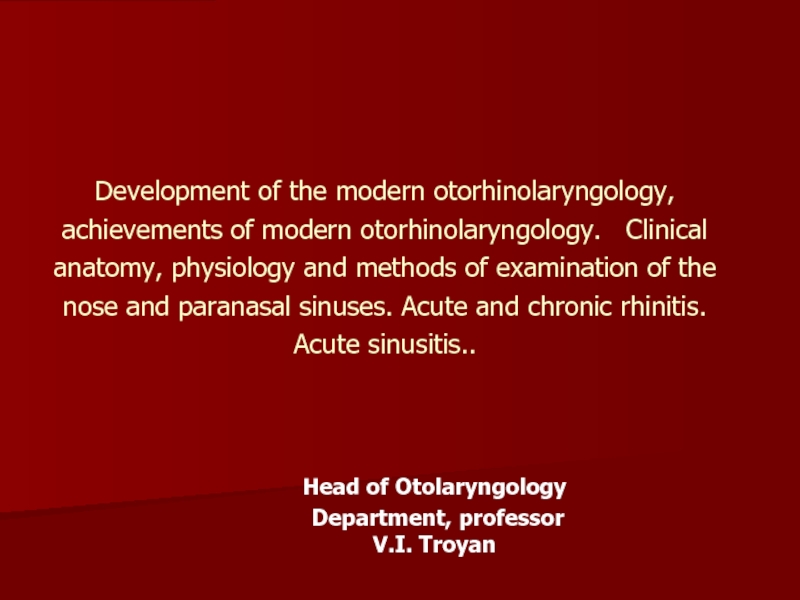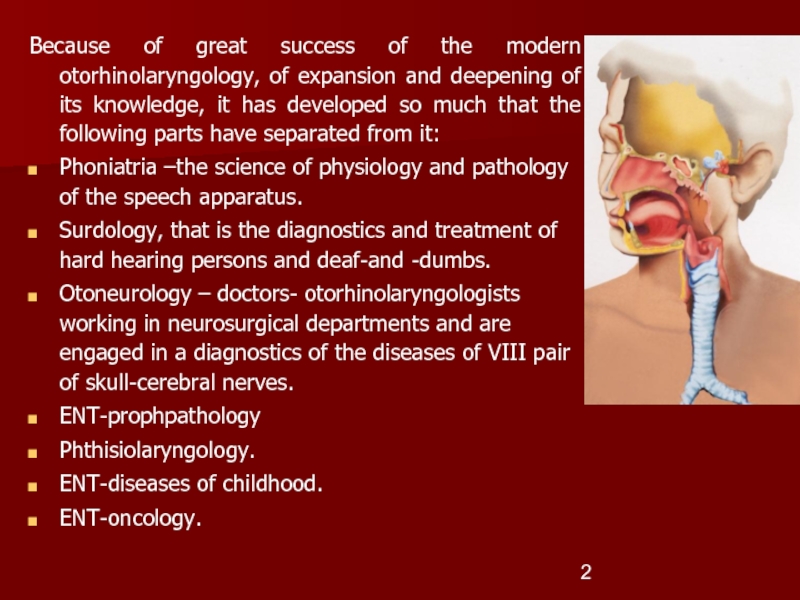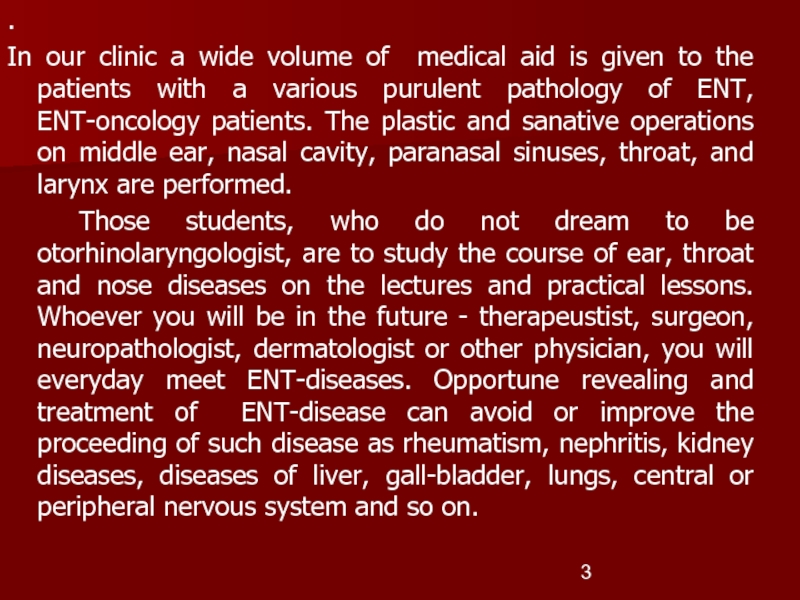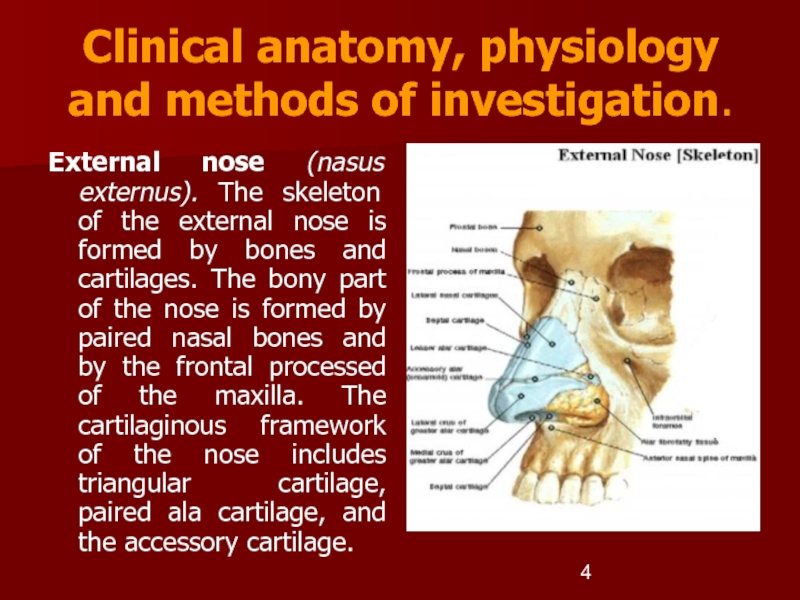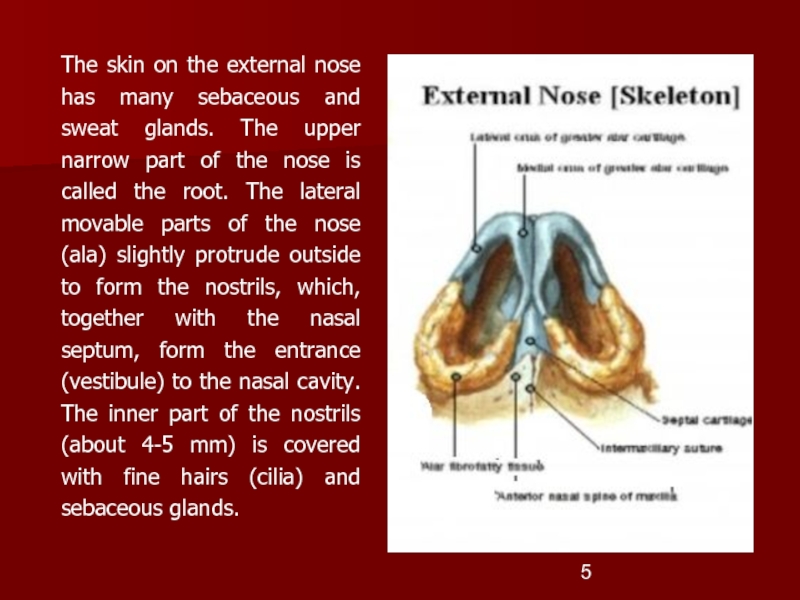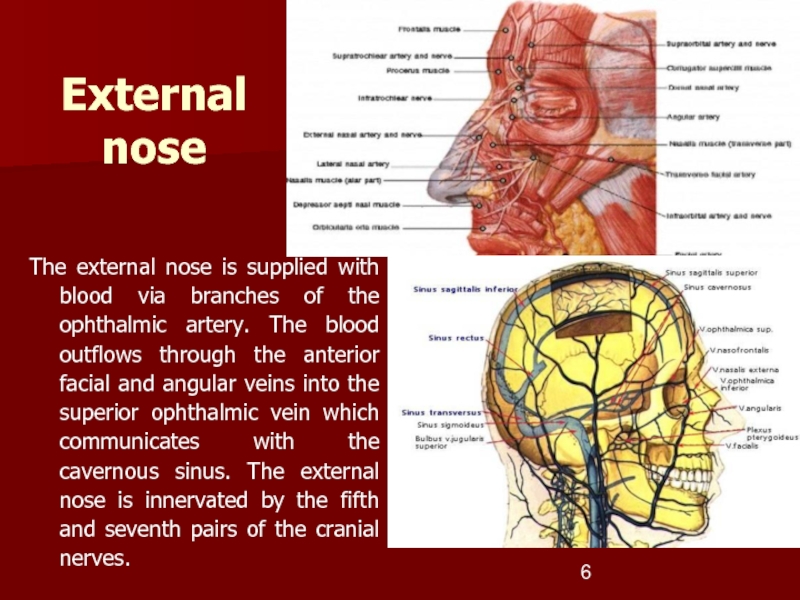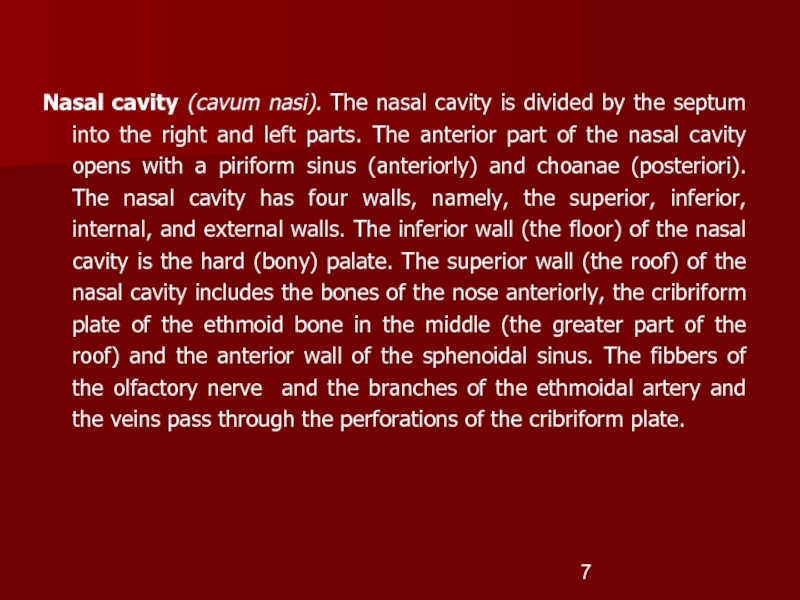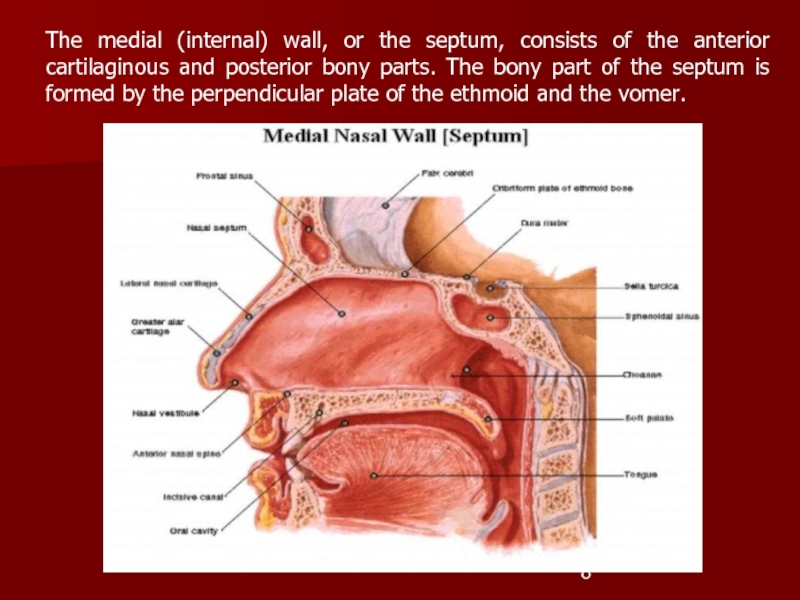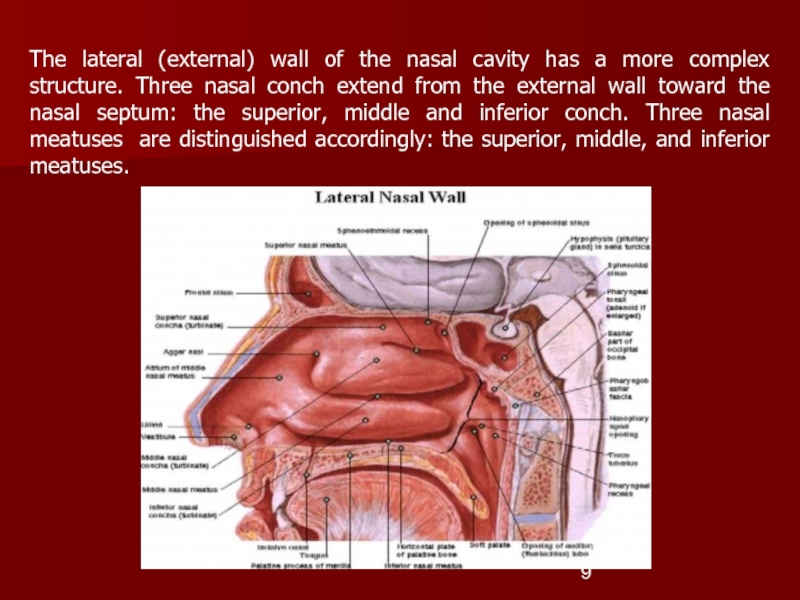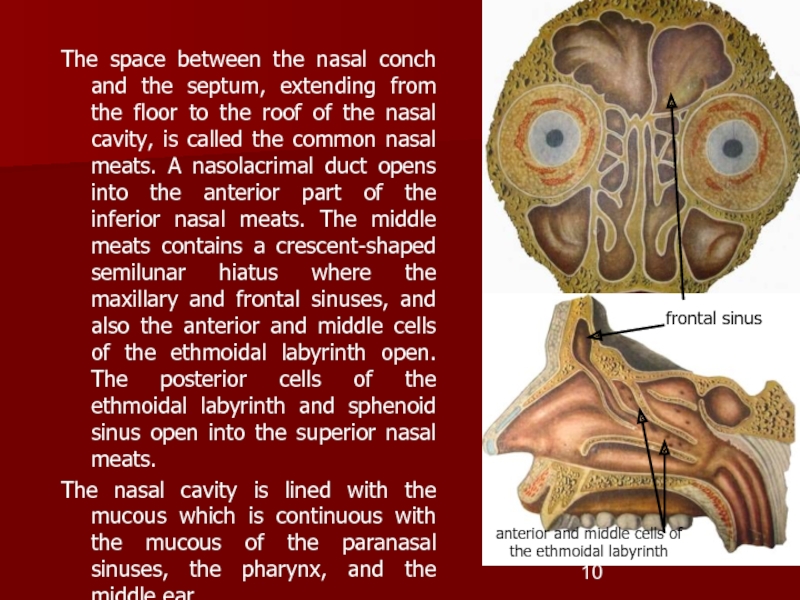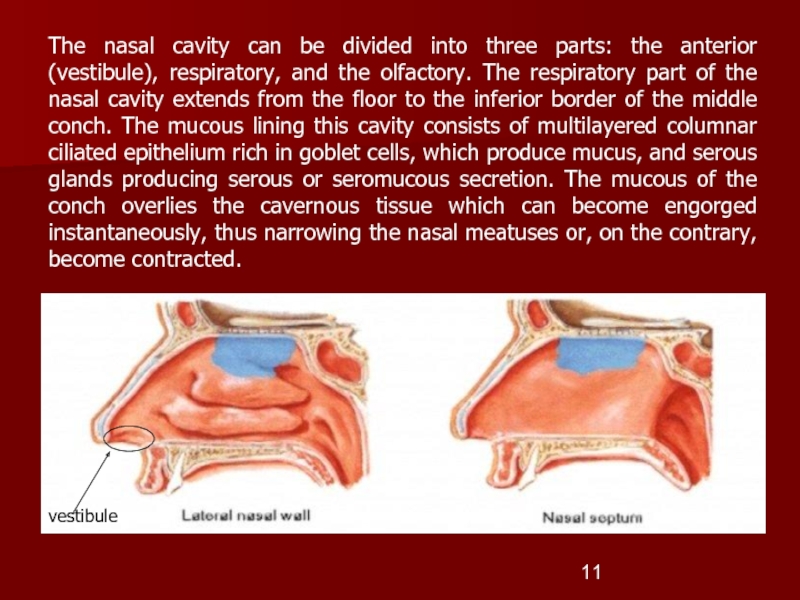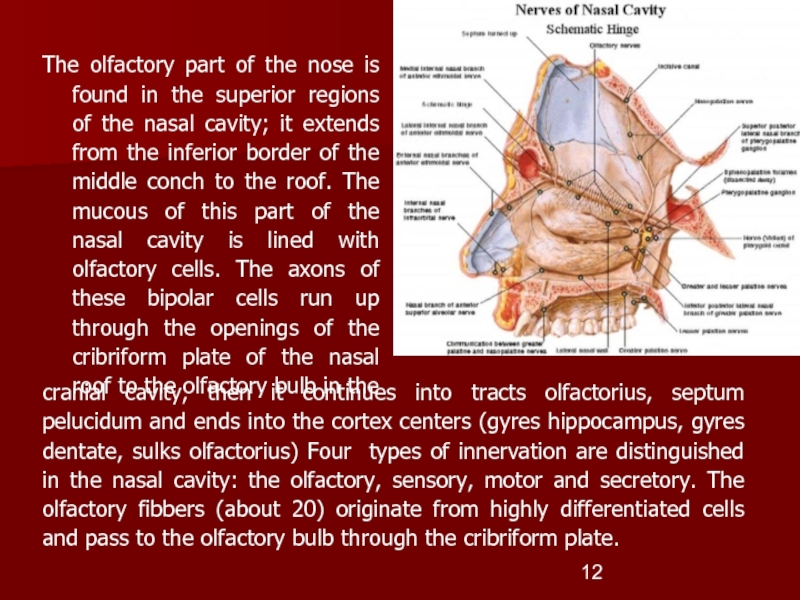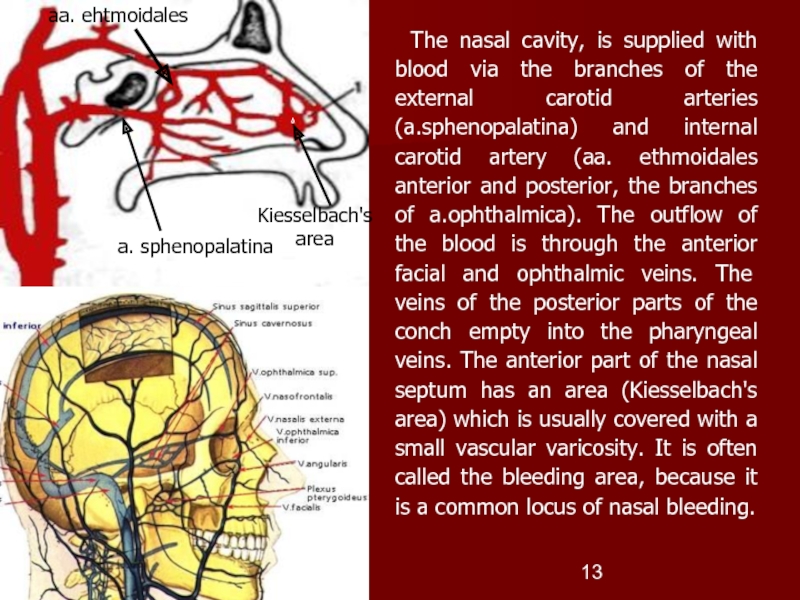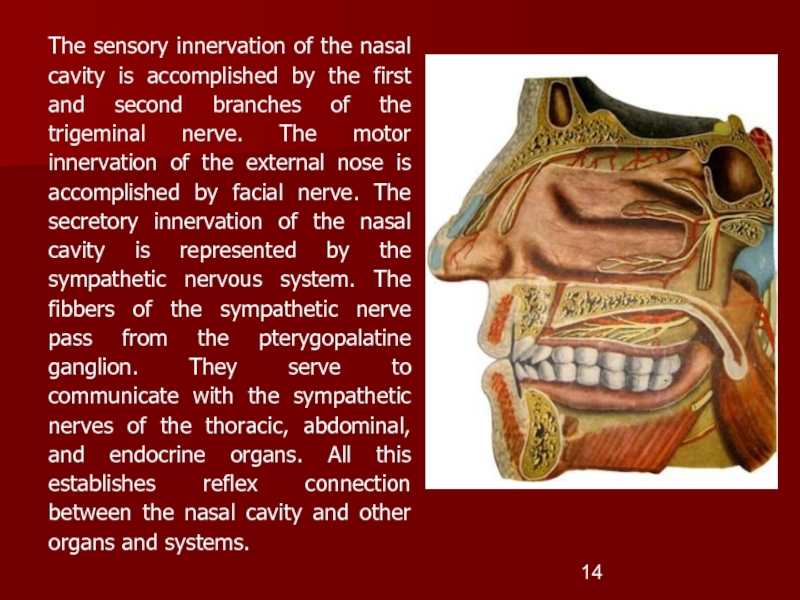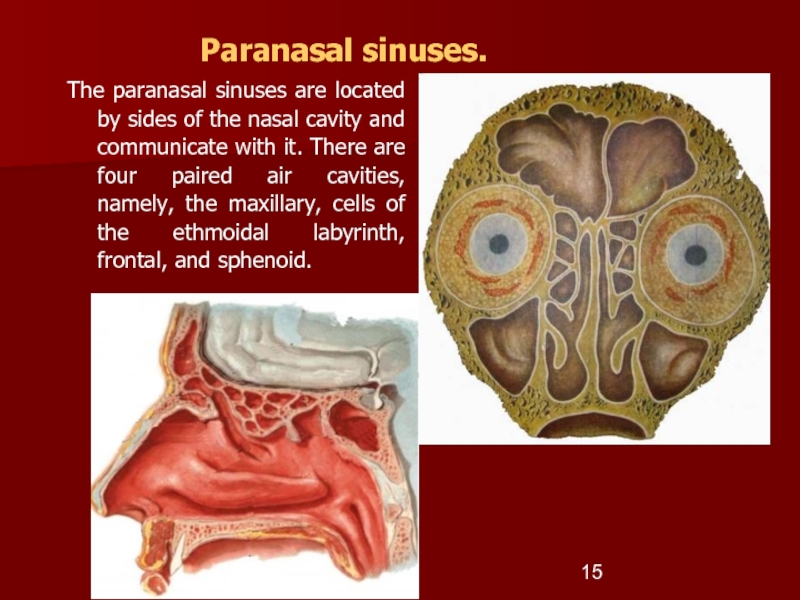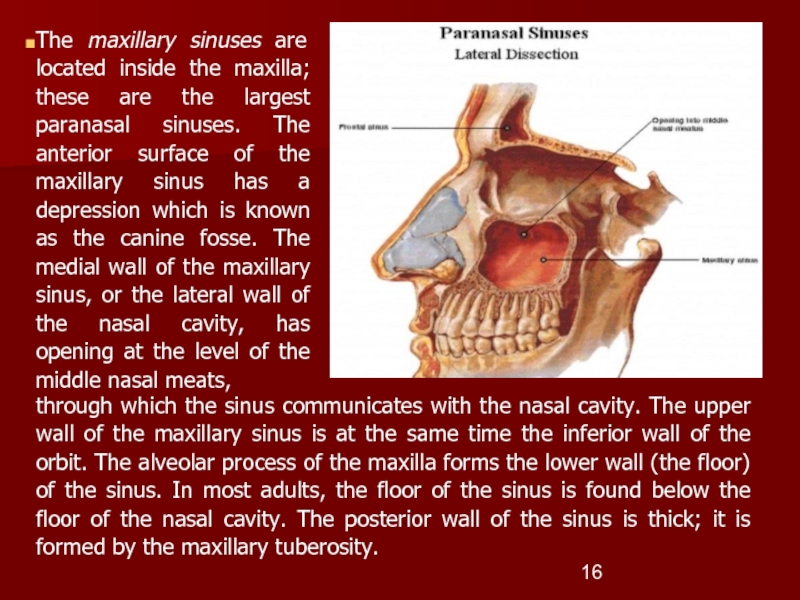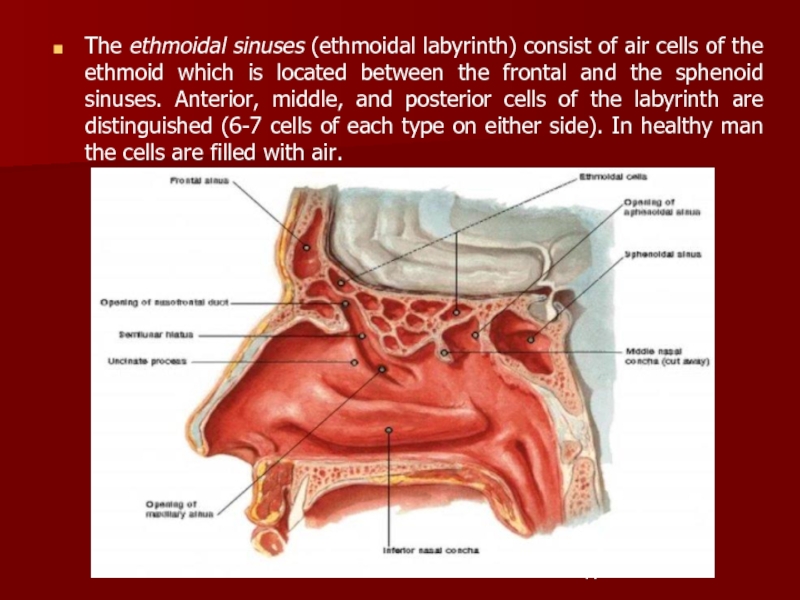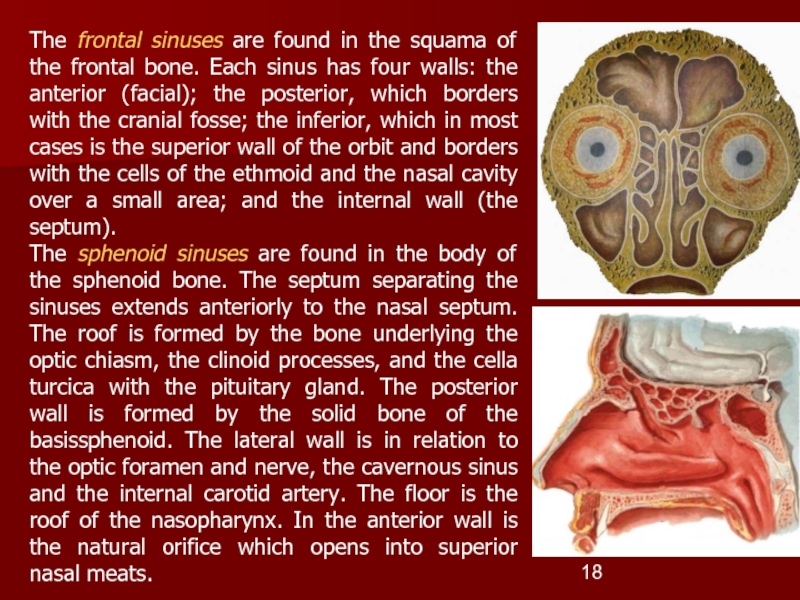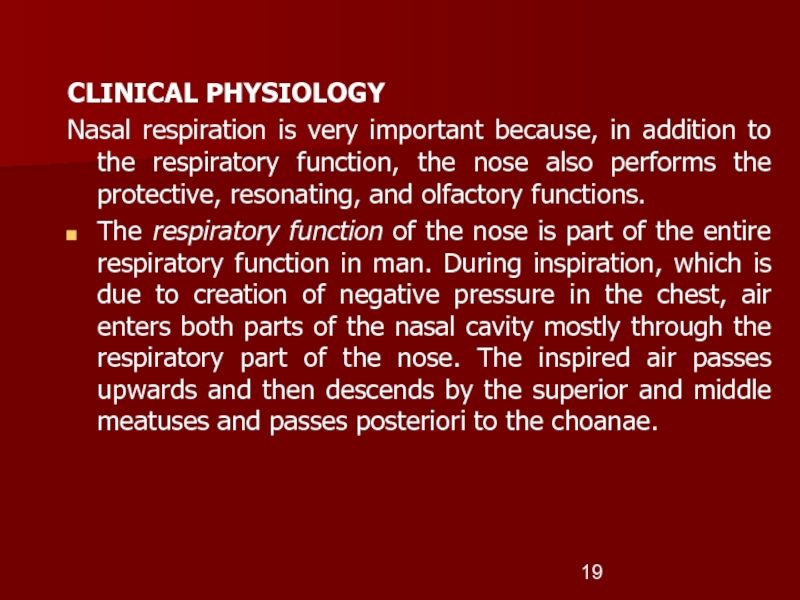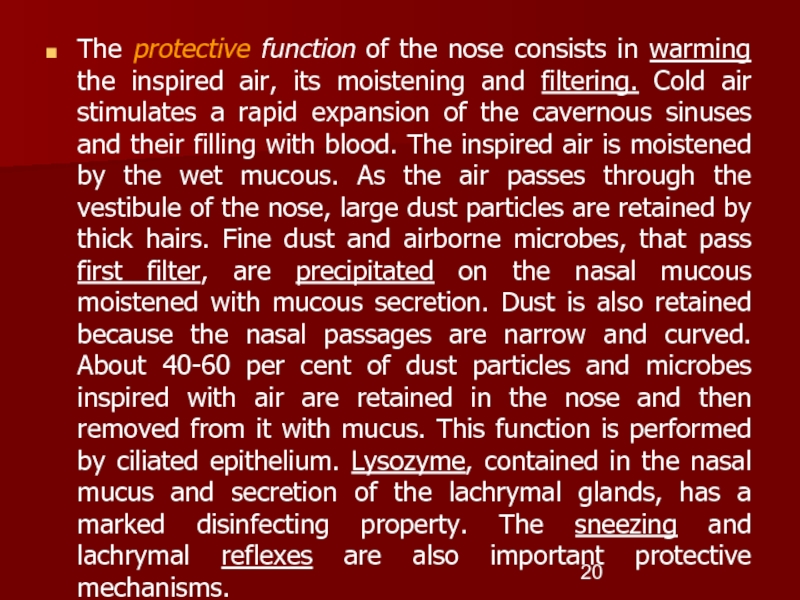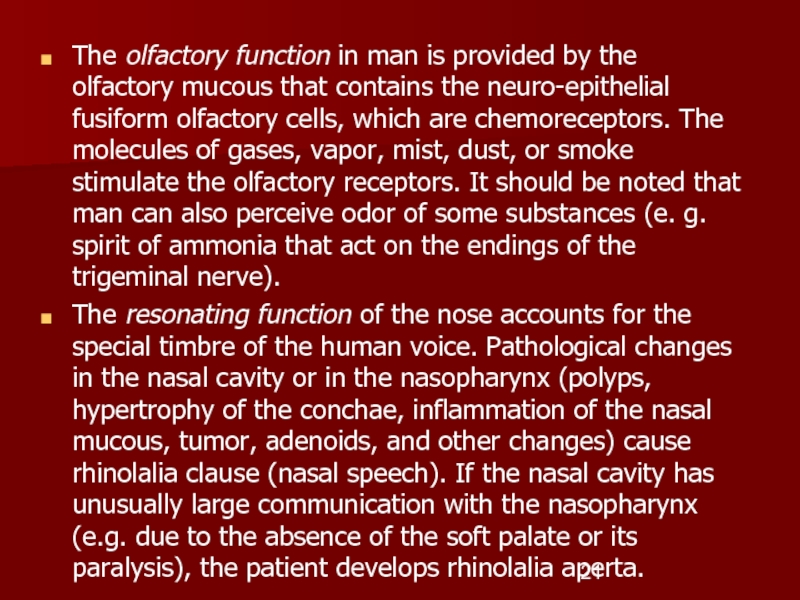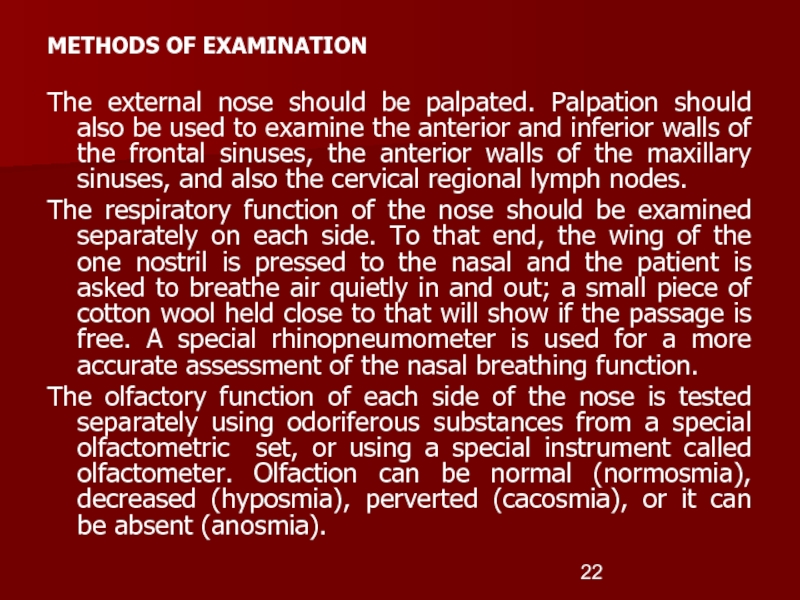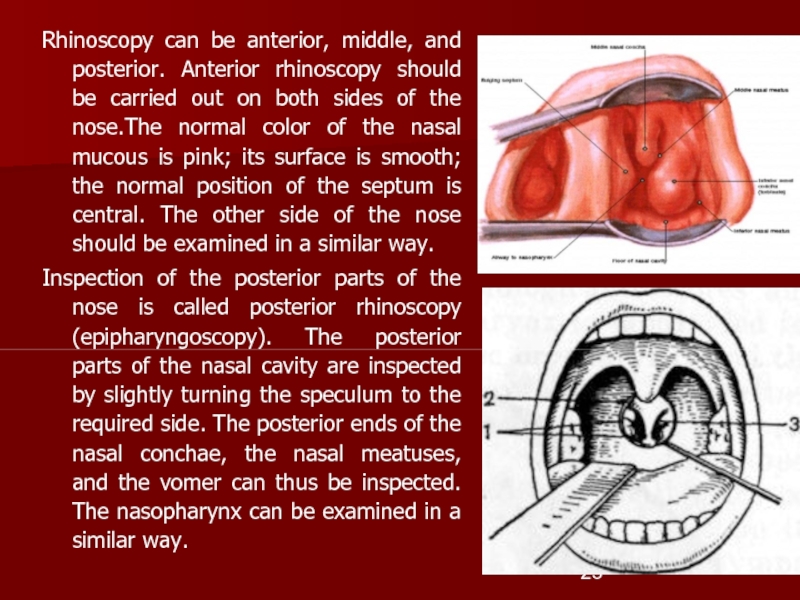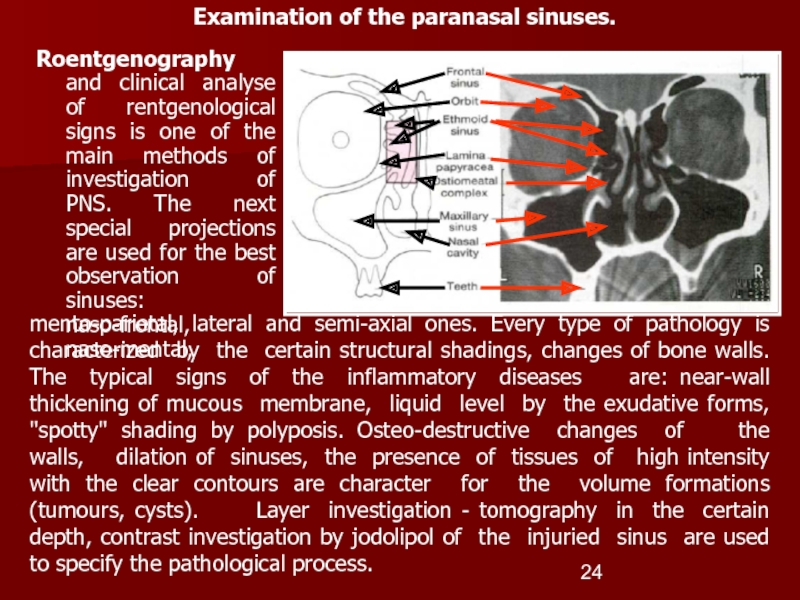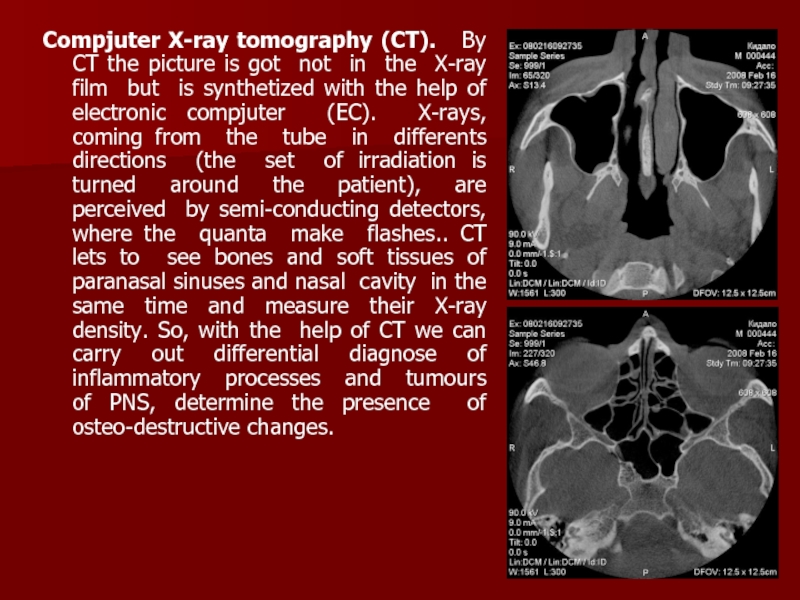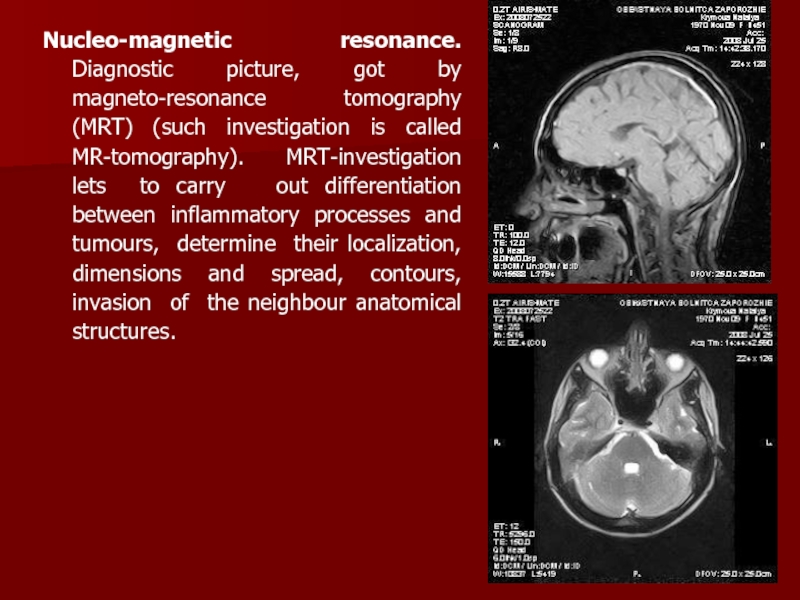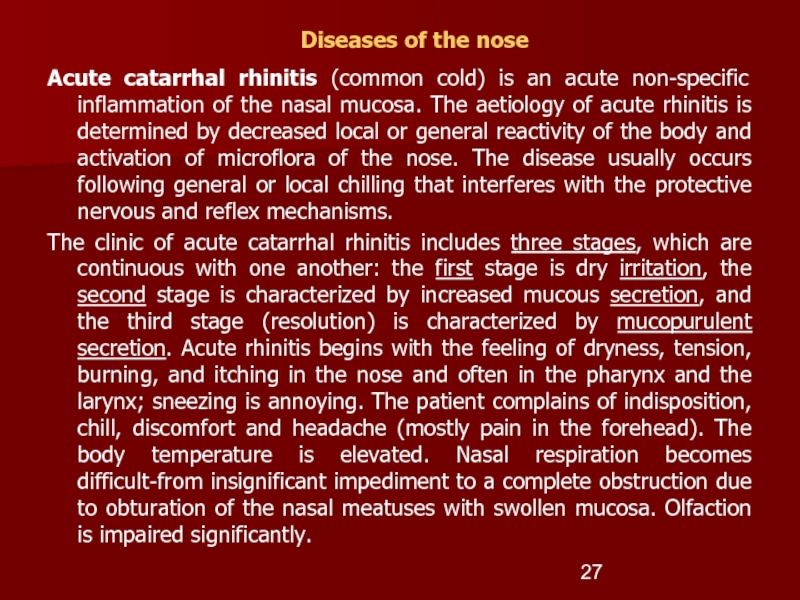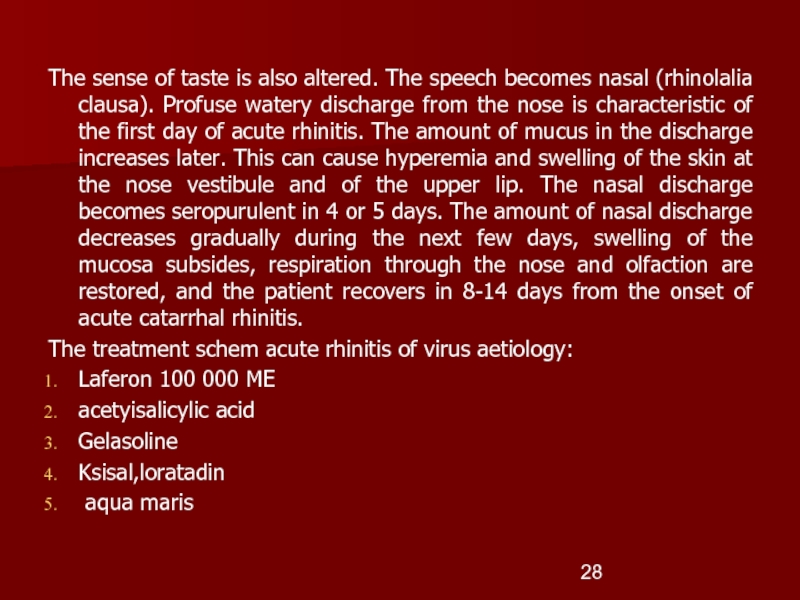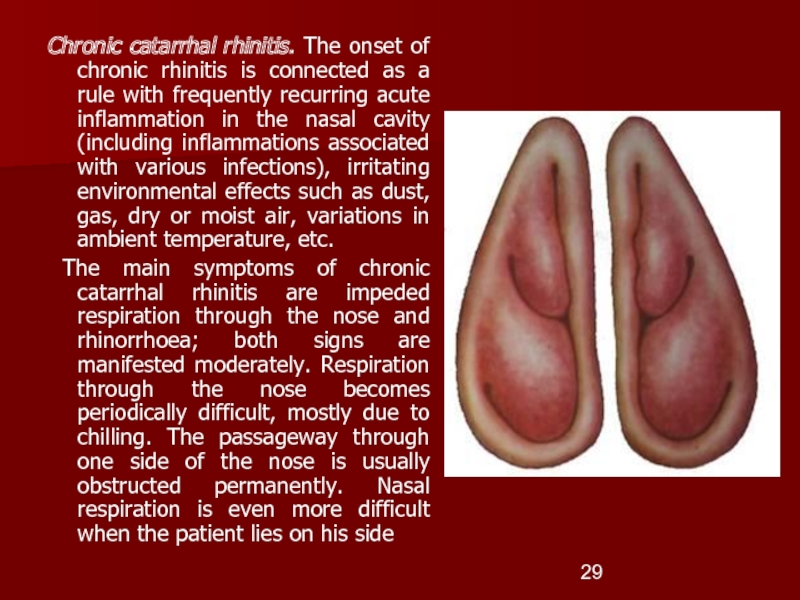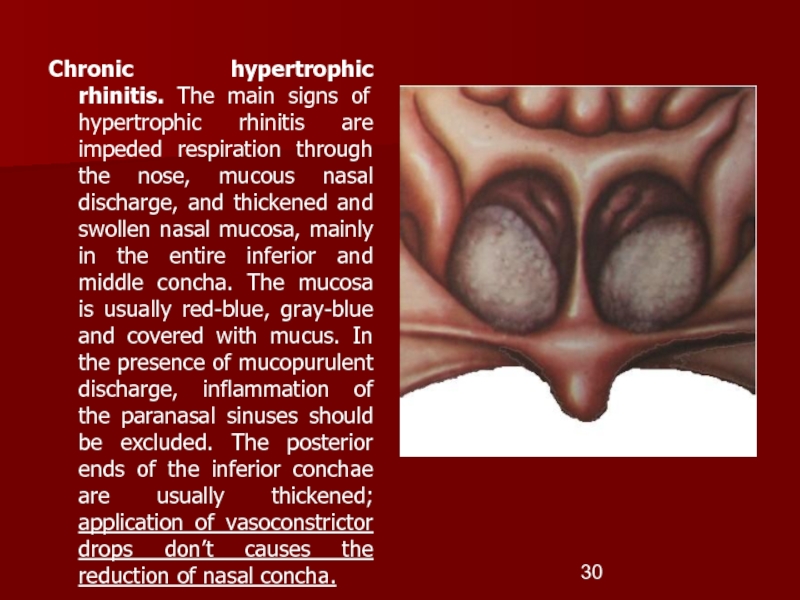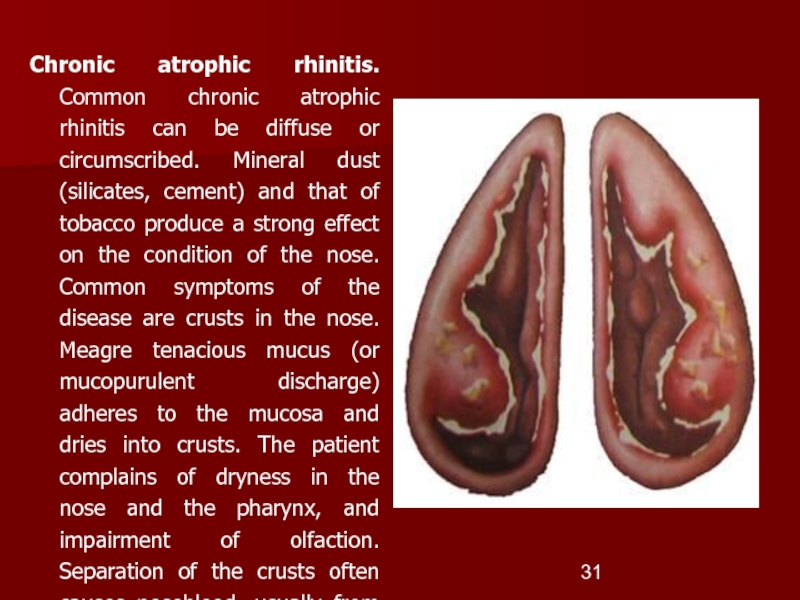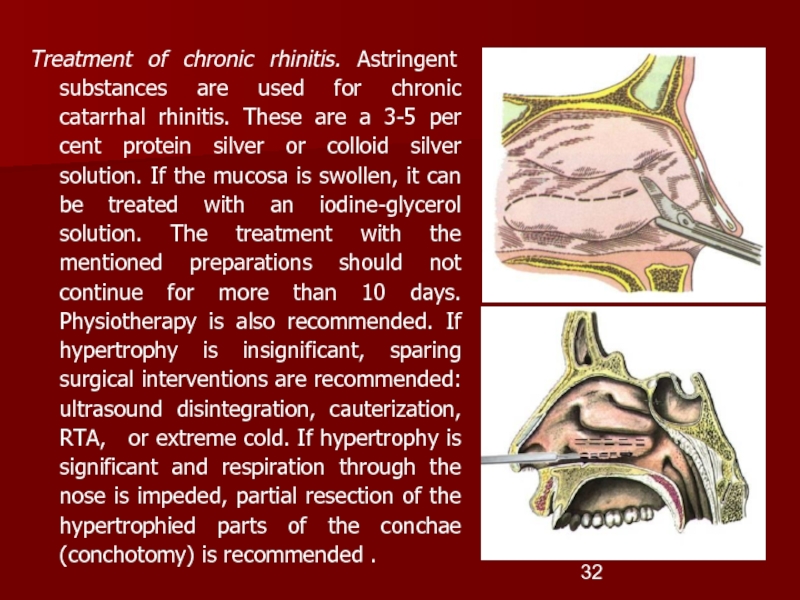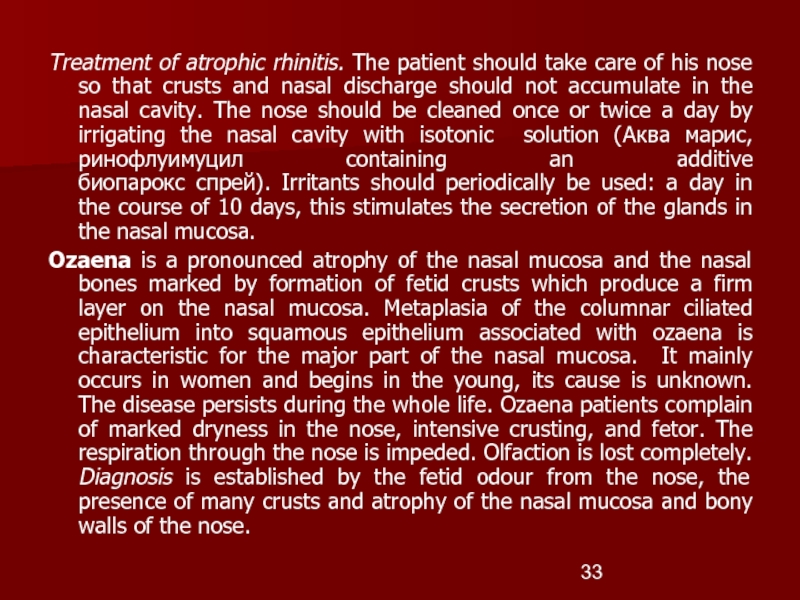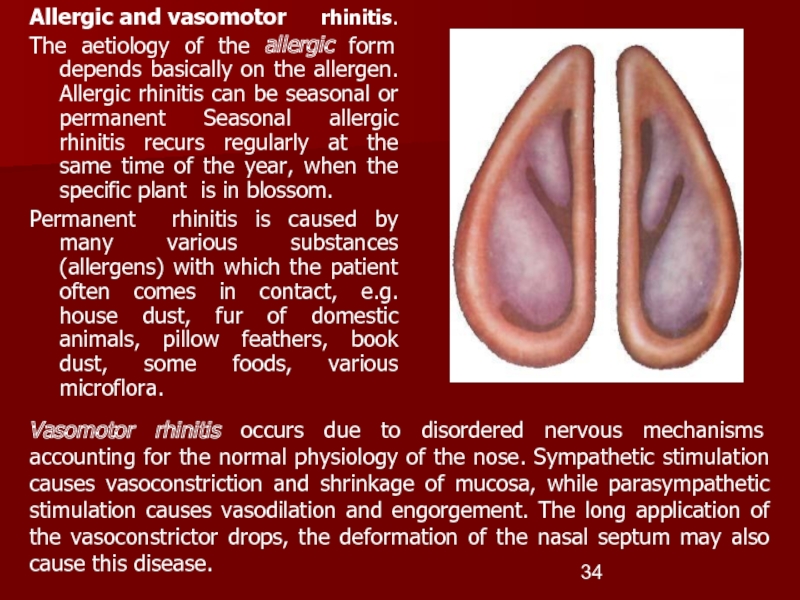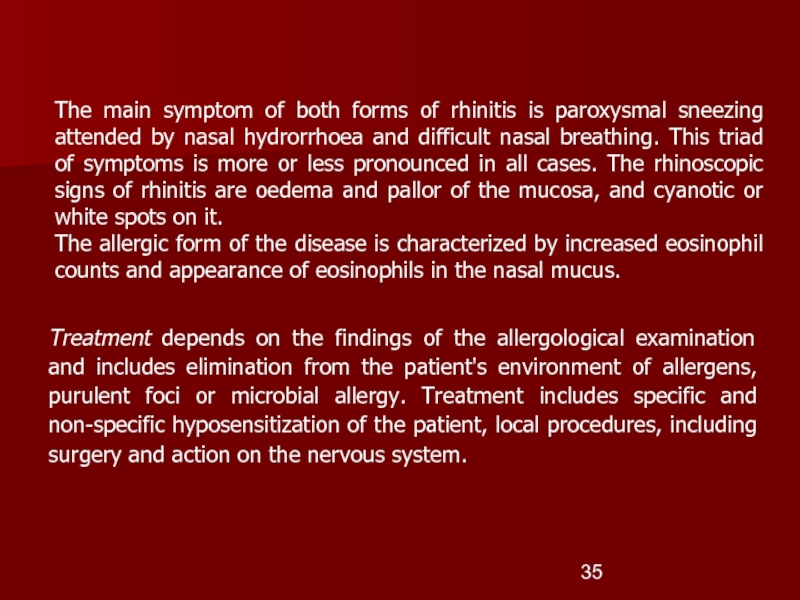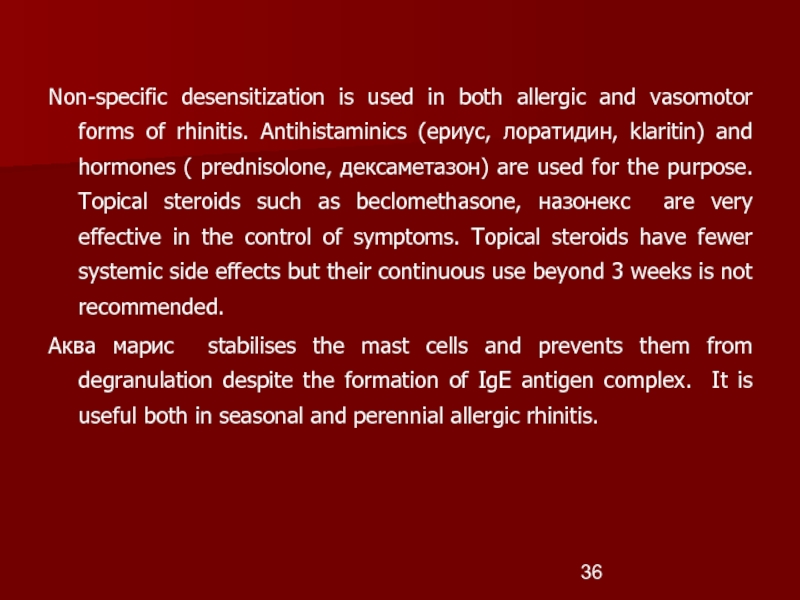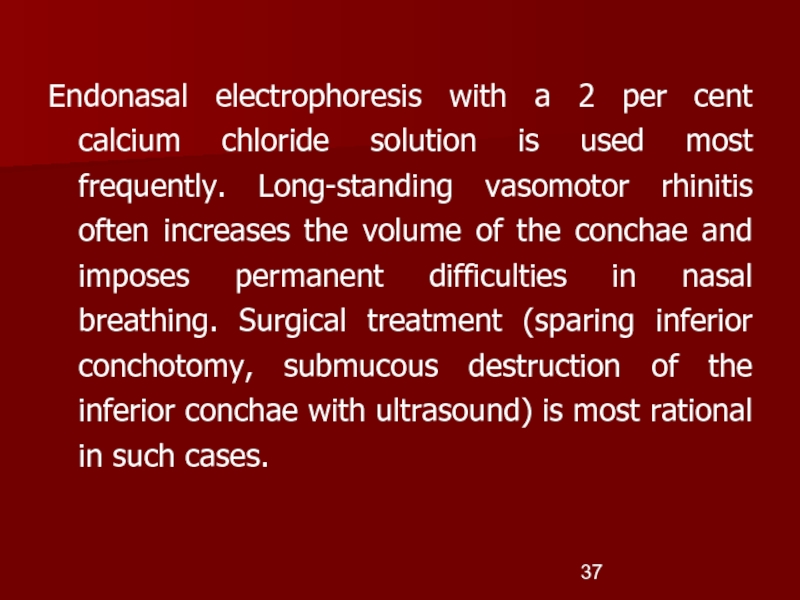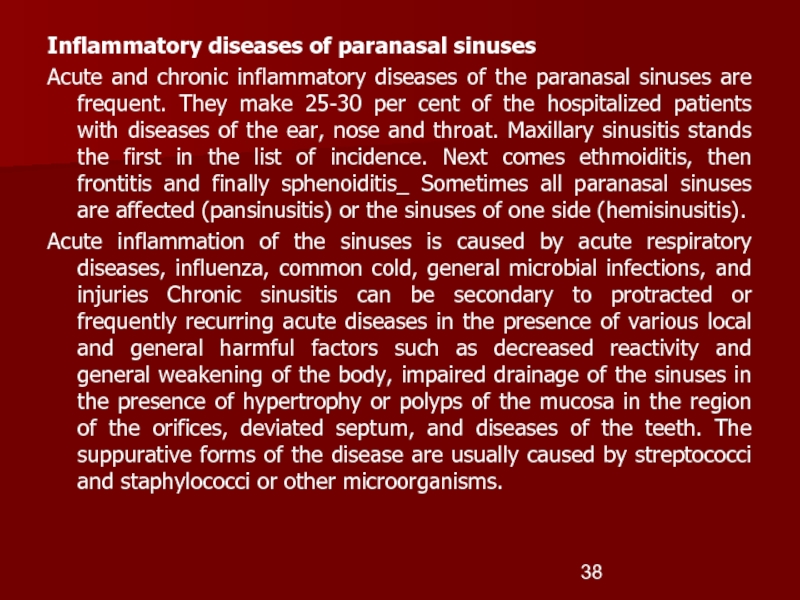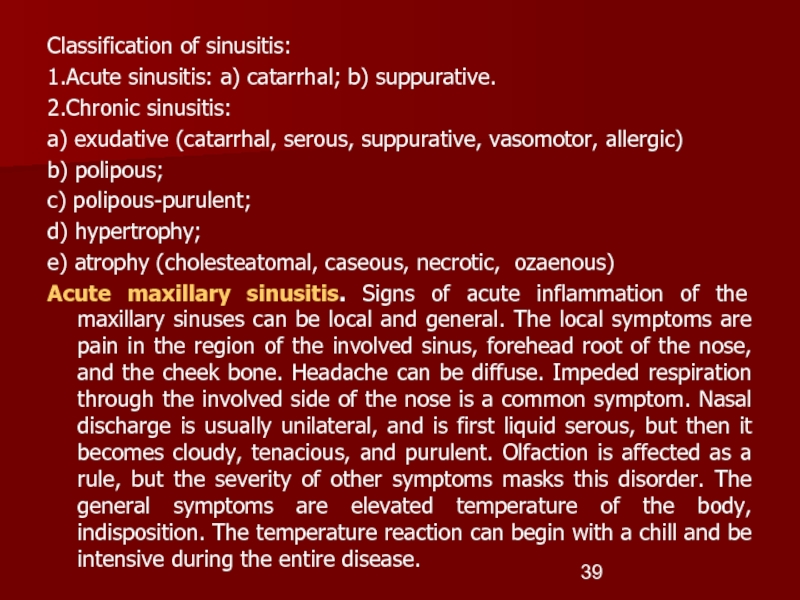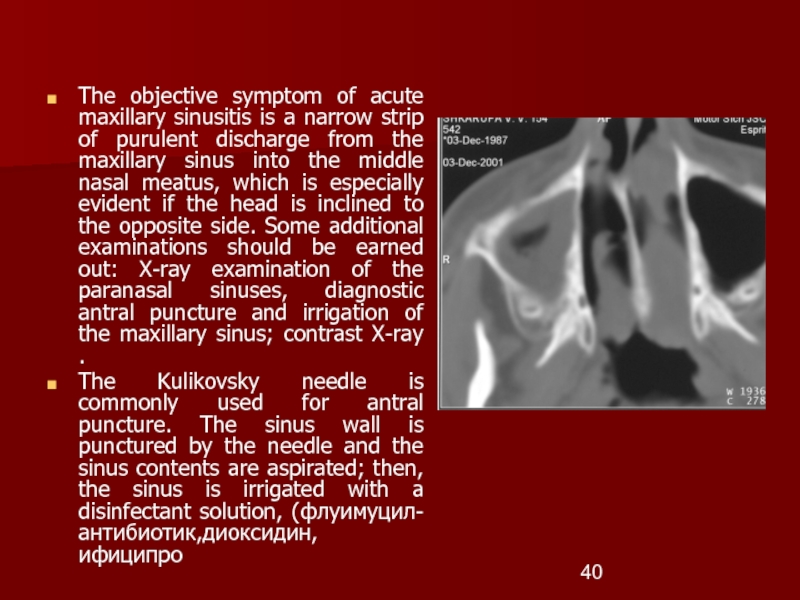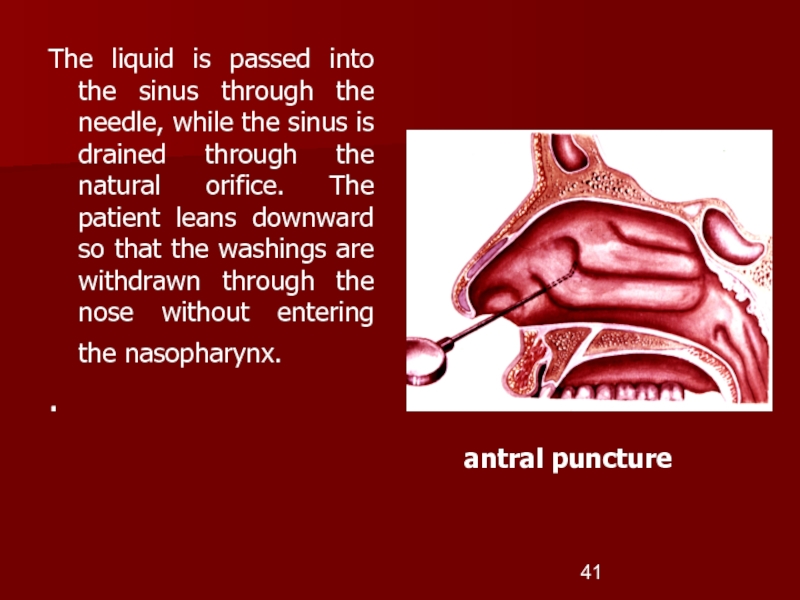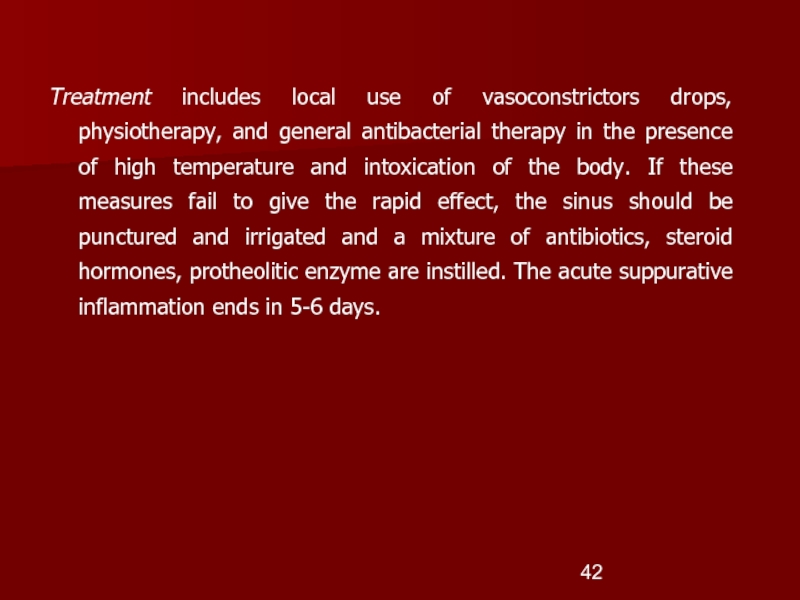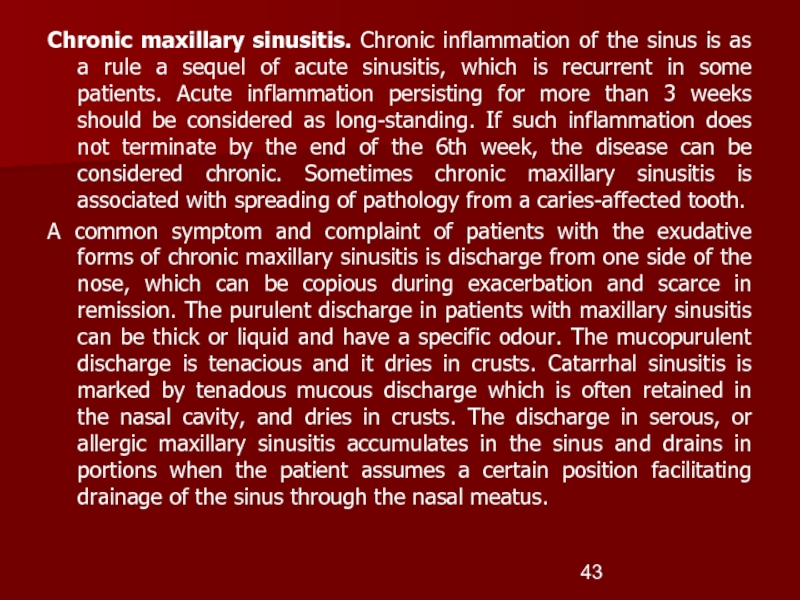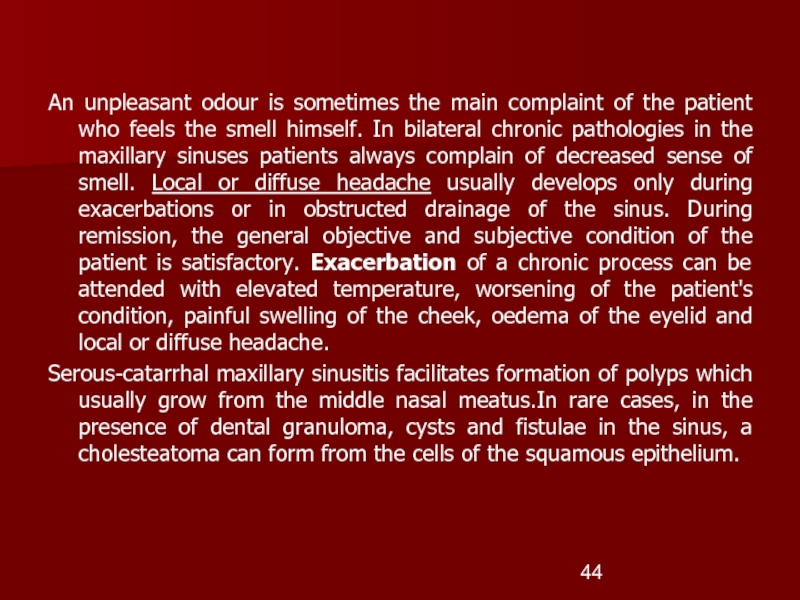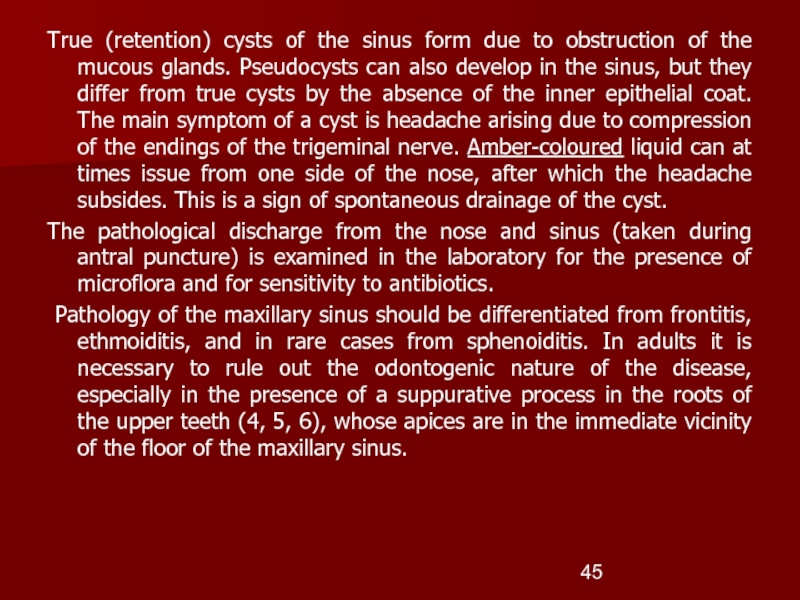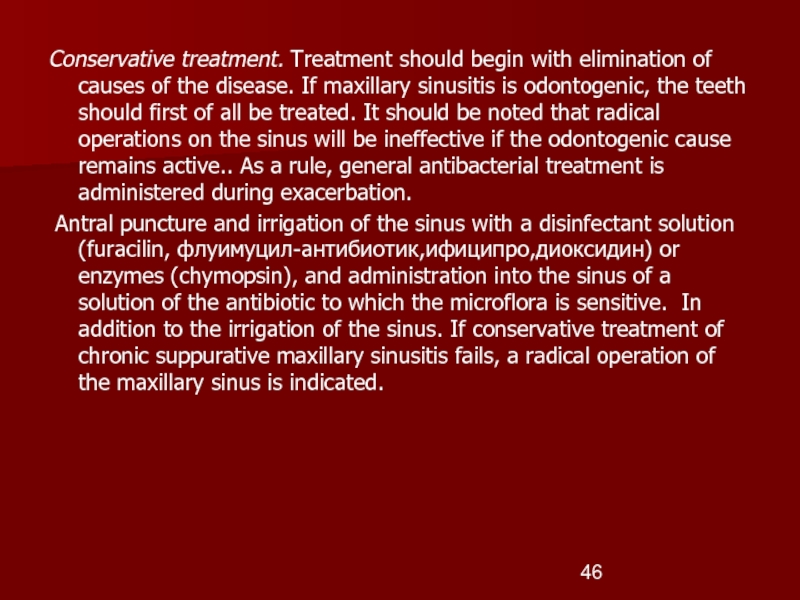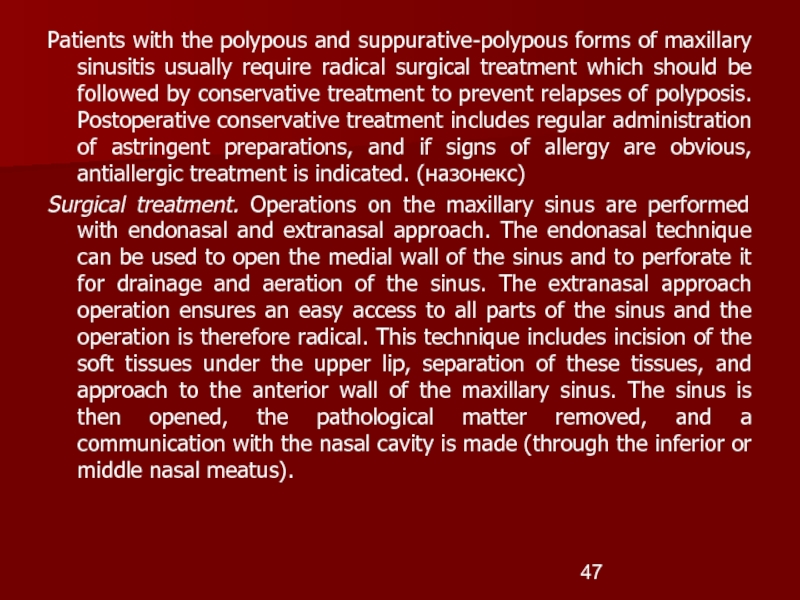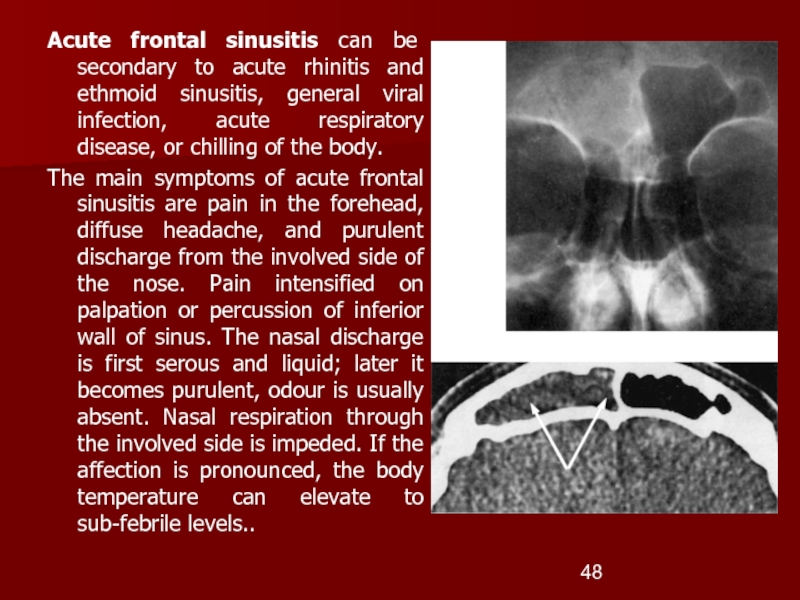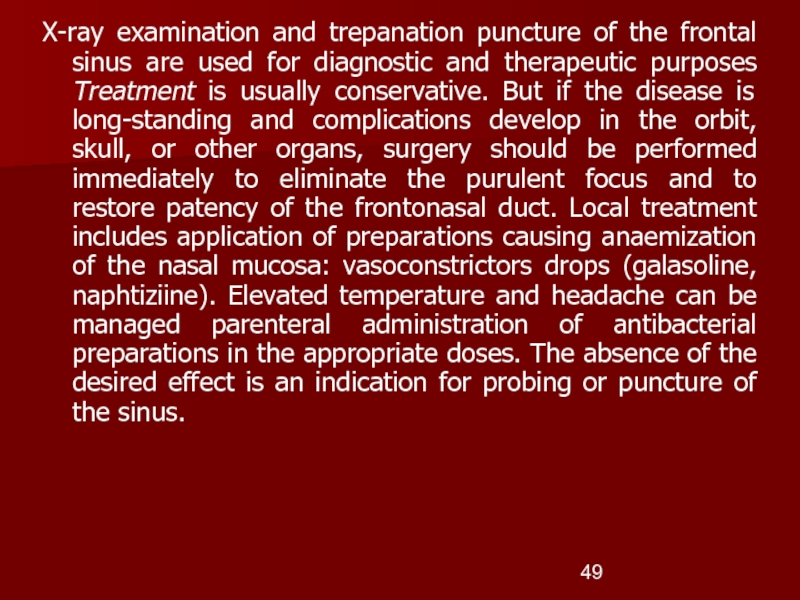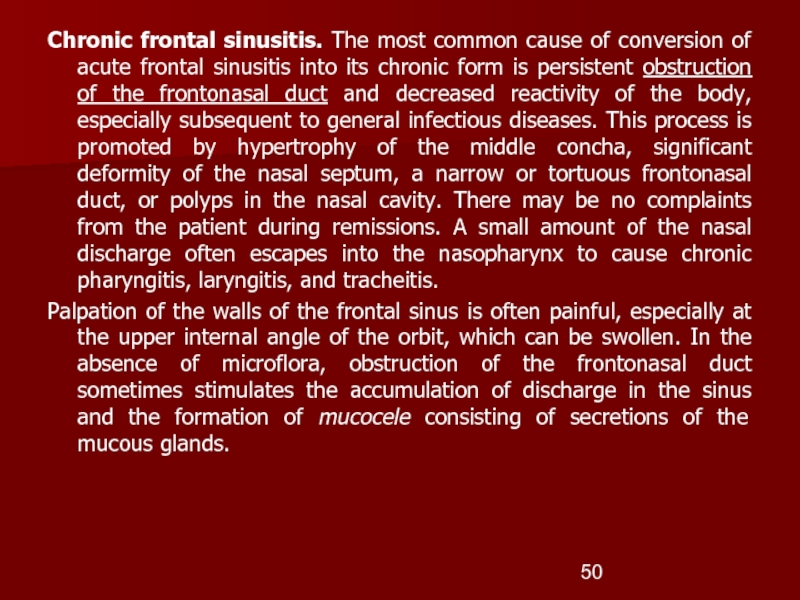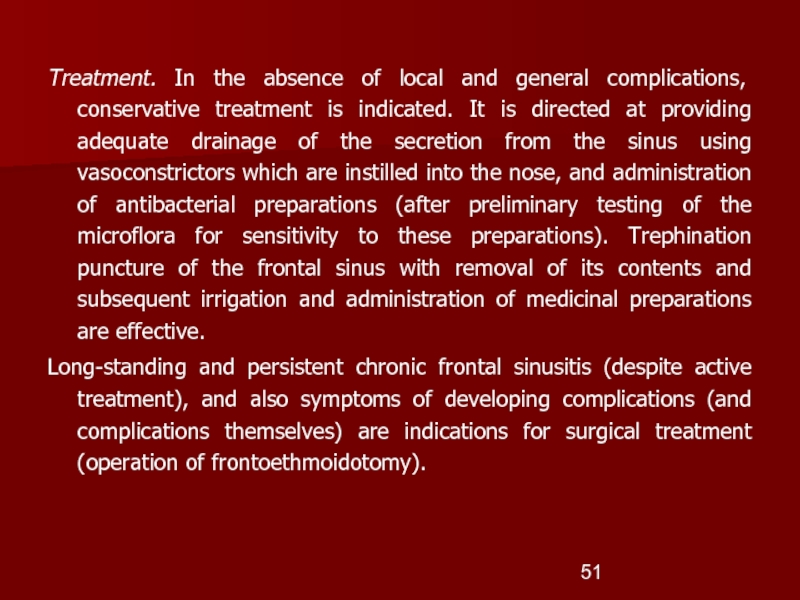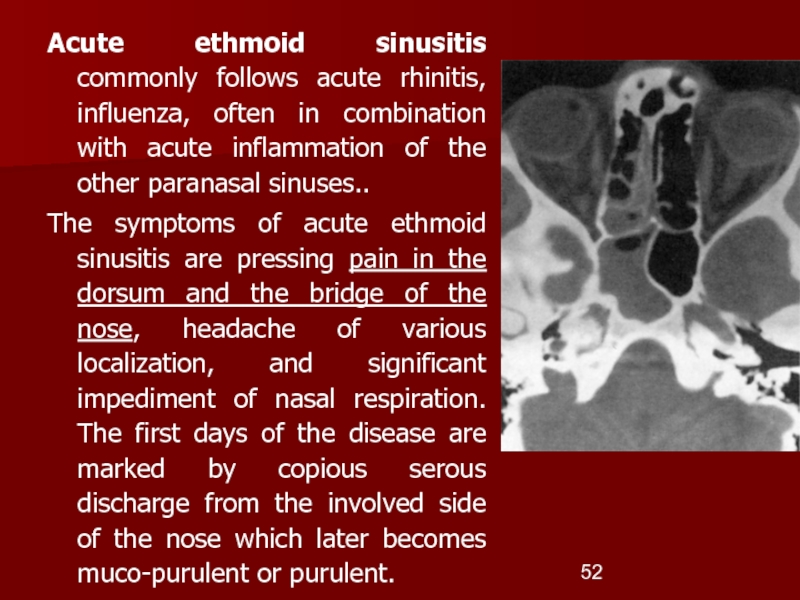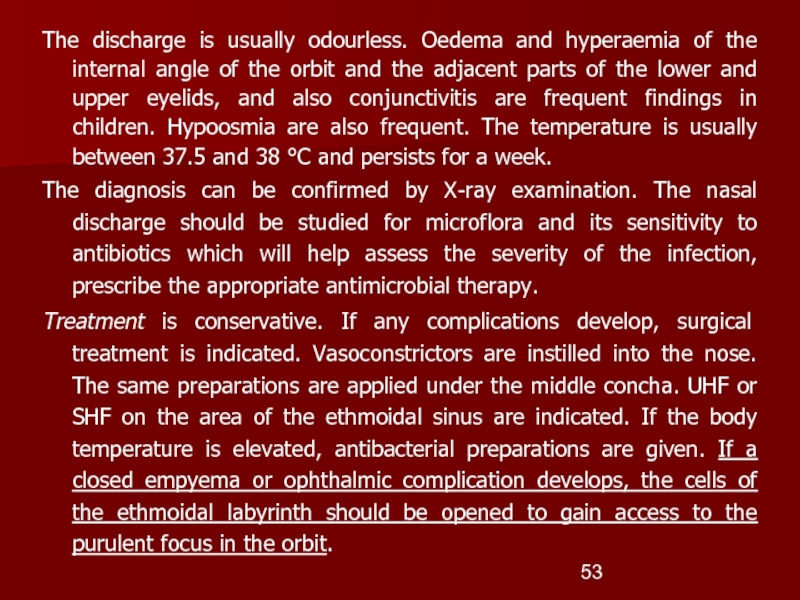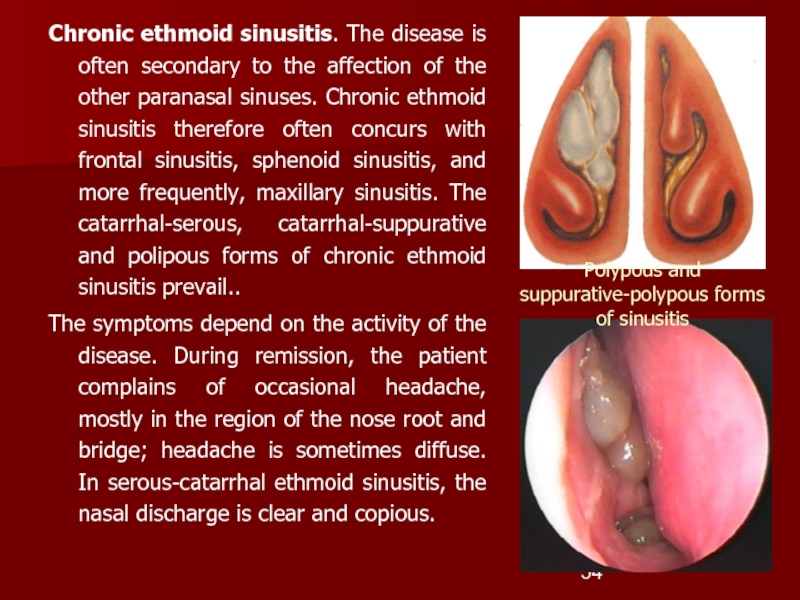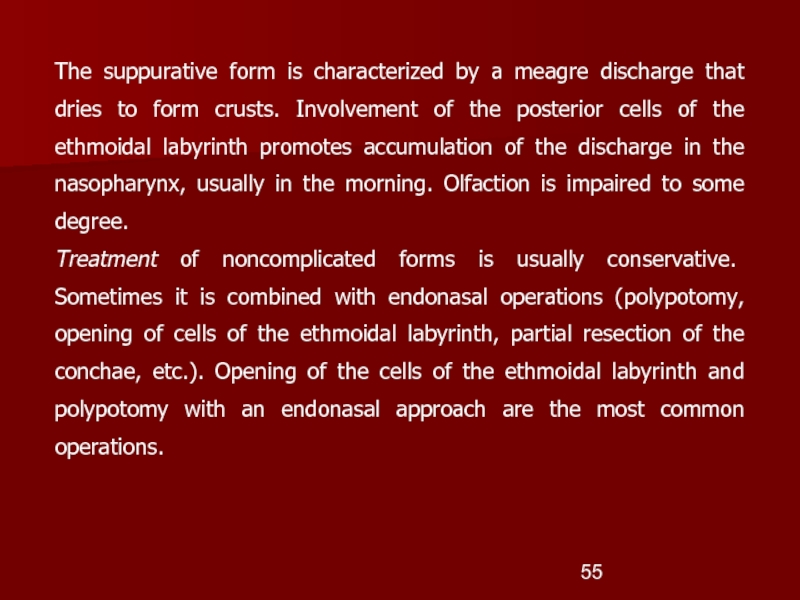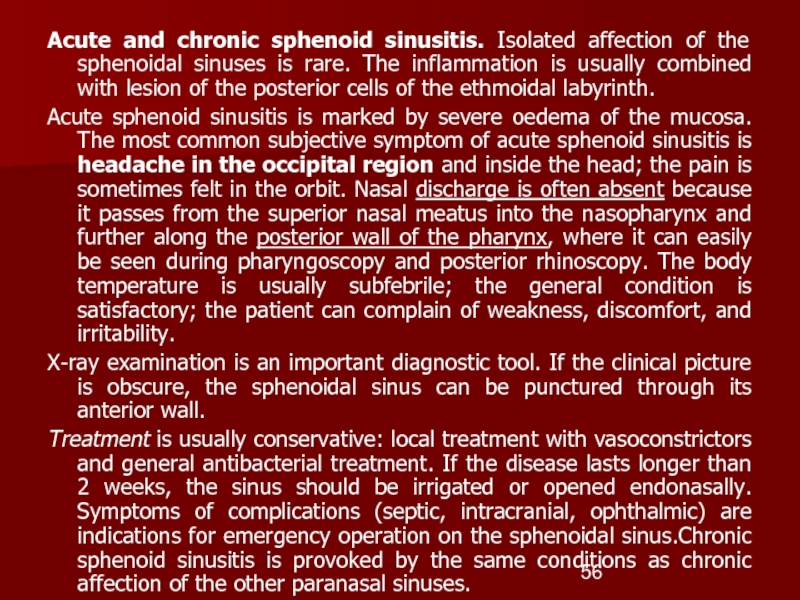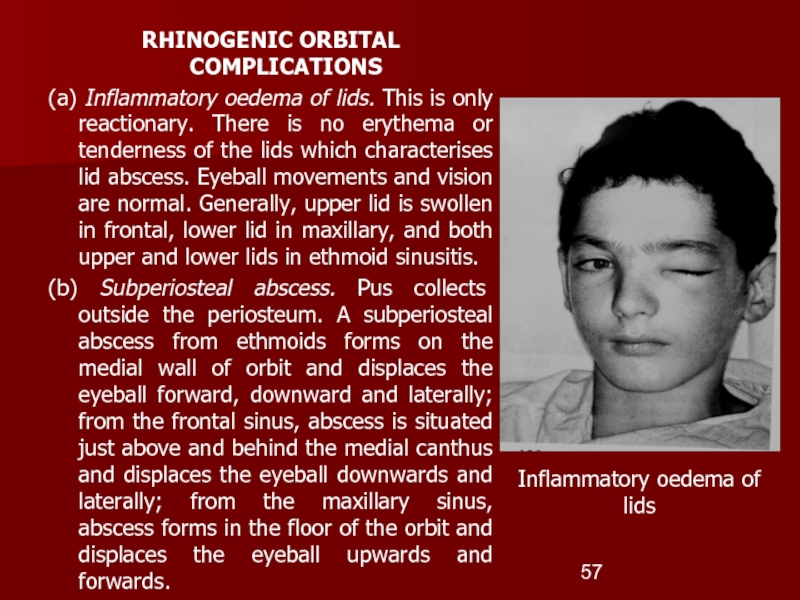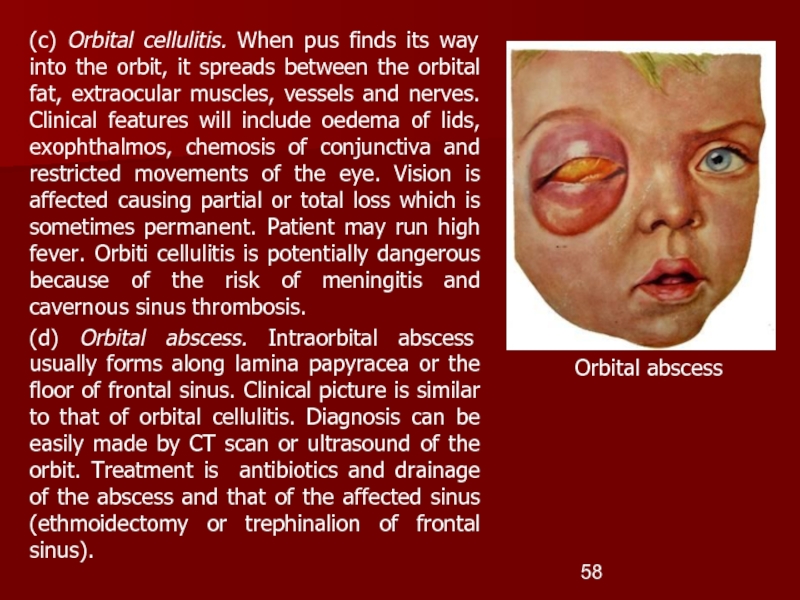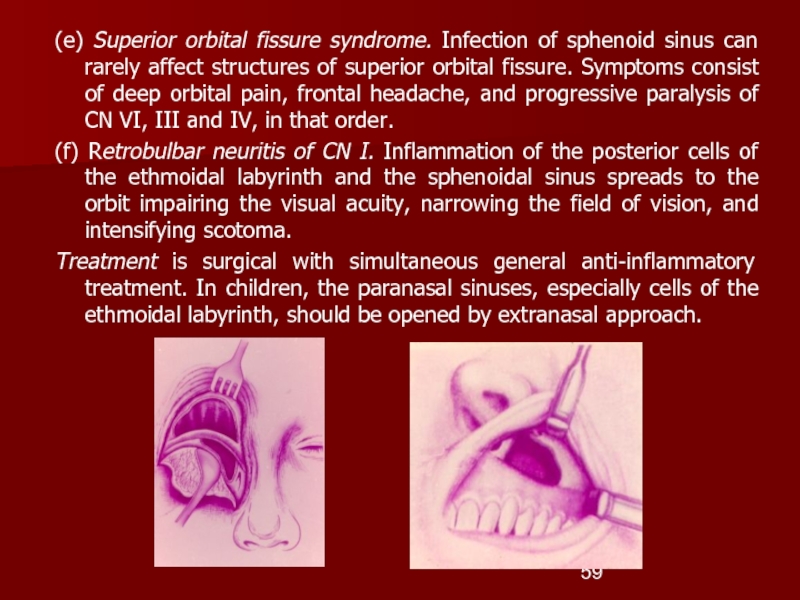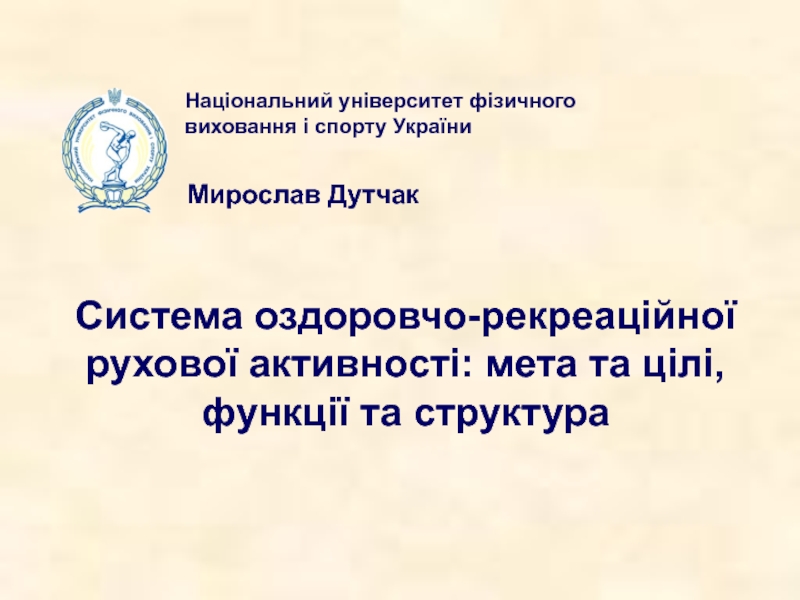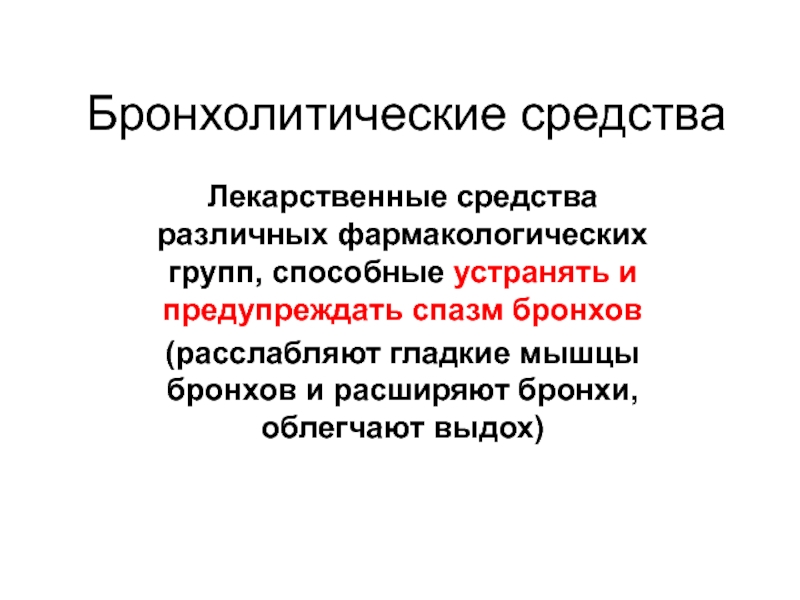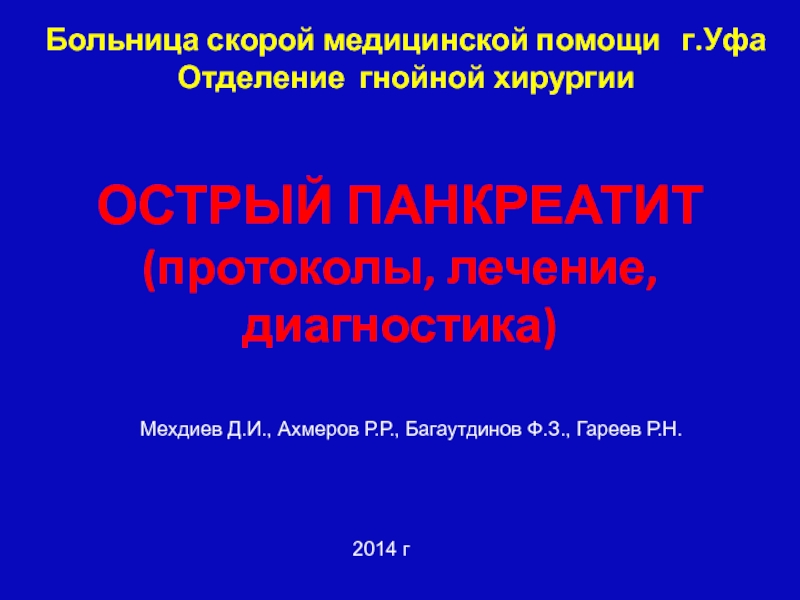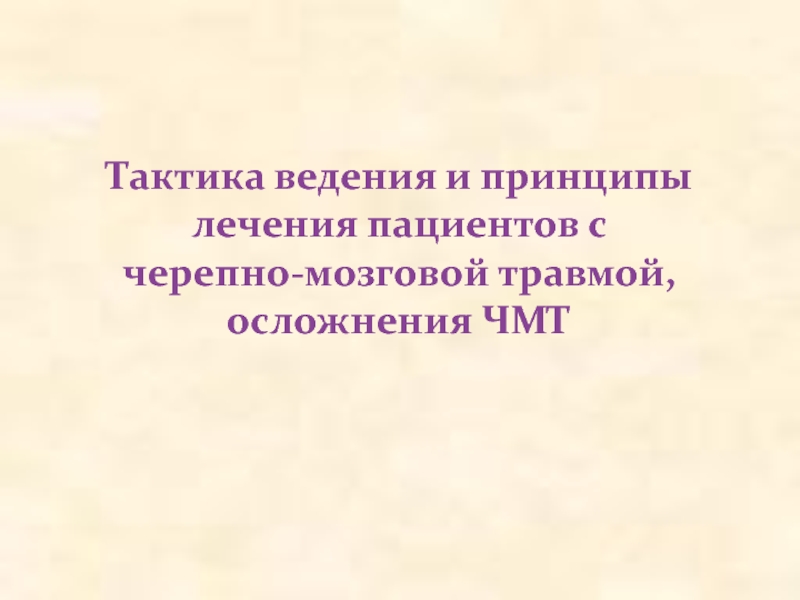Head of Otolaryngology
Department, professor V.I. Troyan
- Главная
- Разное
- Дизайн
- Бизнес и предпринимательство
- Аналитика
- Образование
- Развлечения
- Красота и здоровье
- Финансы
- Государство
- Путешествия
- Спорт
- Недвижимость
- Армия
- Графика
- Культурология
- Еда и кулинария
- Лингвистика
- Английский язык
- Астрономия
- Алгебра
- Биология
- География
- Детские презентации
- Информатика
- История
- Литература
- Маркетинг
- Математика
- Медицина
- Менеджмент
- Музыка
- МХК
- Немецкий язык
- ОБЖ
- Обществознание
- Окружающий мир
- Педагогика
- Русский язык
- Технология
- Физика
- Философия
- Химия
- Шаблоны, картинки для презентаций
- Экология
- Экономика
- Юриспруденция
Development of the modern otorhinolaryngology, achievements of modern otorhinolaryngology презентация
Содержание
- 1. Development of the modern otorhinolaryngology, achievements of modern otorhinolaryngology
- 2. Because of great success of the modern
- 3. . In our clinic a wide volume
- 4. External nose (nasus externus). The skeleton of
- 5. The skin on the external nose has
- 6. The external nose is supplied with blood
- 7. Nasal cavity (cavum nasi). The nasal cavity
- 8. The medial (internal) wall, or the septum,
- 9. The lateral (external) wall of the nasal
- 10. The space between the nasal conch and
- 11. vestibule The nasal cavity can
- 12. The olfactory part of the nose is
- 13. a. sphenopalatina aa. ehtmoidales The nasal cavity,
- 14. The sensory innervation of the nasal cavity
- 15. The paranasal sinuses are located by sides
- 16. The maxillary sinuses are located inside the
- 17. The ethmoidal sinuses (ethmoidal labyrinth) consist of
- 18. The frontal sinuses are found in the
- 19. CLINICAL PHYSIOLOGY Nasal respiration is very important
- 20. The protective function of the nose consists
- 21. The olfactory function in man is provided
- 22. METHODS OF EXAMINATION The external nose
- 23. Rhinoscopy can be anterior, middle, and posterior.
- 24. Roentgenography and clinical analyse of rentgenological signs
- 25. Compjuter X-ray tomography (CT). By CT
- 26. Nucleo-magnetic resonance. Diagnostic picture, got by
- 27. Acute catarrhal rhinitis (common cold) is an
- 28. The sense of taste is also altered.
- 29. Chronic catarrhal rhinitis. The onset of chronic
- 30. Chronic hypertrophic rhinitis. The main signs of
- 31. Chronic atrophic rhinitis. Common chronic atrophic rhinitis
- 32. Treatment of chronic rhinitis. Astringent substances are
- 33. Treatment of atrophic rhinitis. The patient
- 34. Allergic and vasomotor rhinitis. The
- 35. The main symptom of both forms
- 36. Non-specific desensitization is used in both allergic
- 37. Endonasal electrophoresis with a 2 per cent
- 38. Inflammatory diseases of paranasal sinuses Acute and
- 39. Classification of sinusitis: 1.Acute sinusitis: a) catarrhal;
- 40. The objective symptom of acute
- 41. The liquid is passed into the sinus
- 42. Treatment includes local use of vasoconstrictors drops,
- 43. Chronic maxillary sinusitis. Chronic inflammation of the
- 44. An unpleasant odour is sometimes the main
- 45. True (retention) cysts of the sinus form
- 46. Conservative treatment. Treatment should begin with elimination
- 47. Patients with the polypous and suppurative-polypous forms
- 48. Acute frontal sinusitis can be secondary to
- 49. X-ray examination and trepanation puncture of the
- 50. Chronic frontal sinusitis. The most common cause
- 51. Treatment. In the absence of local and
- 52. Acute ethmoid sinusitis commonly follows acute rhinitis,
- 53. The discharge is usually odourless. Oedema and
- 54. Chronic ethmoid sinusitis. The disease is often
- 55. The suppurative form is characterized by a
- 56. Acute and chronic sphenoid sinusitis. Isolated affection
- 57. RHINOGENIC ORBITAL COMPLICATIONS (a) Inflammatory oedema of
- 58. Orbital abscess (c) Orbital cellulitis. When pus
- 59. (e) Superior orbital fissure syndrome. Infection of
Слайд 1Development of the modern otorhinolaryngology, achievements of modern otorhinolaryngology. Clinical
Слайд 2Because of great success of the modern otorhinolaryngology, of expansion and
Phoniatria –the science of physiology and pathology of the speech apparatus.
Surdology, that is the diagnostics and treatment of hard hearing persons and deaf-and -dumbs.
Otoneurology – doctors- otorhinolaryngologists working in neurosurgical departments and are engaged in a diagnostics of the diseases of VIII pair of skull-cerebral nerves.
ENT-prophpathology
Phthisiolaryngology.
ENT-diseases of childhood.
ENT-oncology.
Слайд 3.
In our clinic a wide volume of medical aid is given
Those students, who do not dream to be otorhinolaryngologist, are to study the course of ear, throat and nose diseases on the lectures and practical lessons. Whoever you will be in the future - therapeustist, surgeon, neuropathologist, dermatologist or other physician, you will everyday meet ENT-diseases. Opportune revealing and treatment of ENT-disease can avoid or improve the proceeding of such disease as rheumatism, nephritis, kidney diseases, diseases of liver, gall-bladder, lungs, central or peripheral nervous system and so on.
Слайд 4External nose (nasus externus). The skeleton of the external nose is
Clinical anatomy, physiology and methods of investigation.
Слайд 5The skin on the external nose has many sebaceous and sweat
Слайд 6The external nose is supplied with blood via branches of the
External nose
Слайд 7Nasal cavity (cavum nasi). The nasal cavity is divided by the
Слайд 8The medial (internal) wall, or the septum, consists of the anterior
Слайд 9The lateral (external) wall of the nasal cavity has a more
Слайд 10The space between the nasal conch and the septum, extending from
The nasal cavity is lined with the mucous which is continuous with the mucous of the paranasal sinuses, the pharynx, and the middle ear.
frontal sinus
anterior and middle cells of the ethmoidal labyrinth
Слайд 11
vestibule
The nasal cavity can be divided into three parts: the anterior
Слайд 12The olfactory part of the nose is found in the superior
cranial cavity, then it continues into tracts olfactorius, septum pelucidum and ends into the cortex centers (gyres hippocampus, gyres dentate, sulks olfactorius) Four types of innervation are distinguished in the nasal cavity: the olfactory, sensory, motor and secretory. The olfactory fibbers (about 20) originate from highly differentiated cells and pass to the olfactory bulb through the cribriform plate.
Слайд 13a. sphenopalatina
aa. ehtmoidales
The nasal cavity, is supplied with blood via the
Kiesselbach's area
Слайд 14The sensory innervation of the nasal cavity is accomplished by the
Слайд 15The paranasal sinuses are located by sides of the nasal cavity
Paranasal sinuses.
Слайд 16The maxillary sinuses are located inside the maxilla; these are the
through which the sinus communicates with the nasal cavity. The upper wall of the maxillary sinus is at the same time the inferior wall of the orbit. The alveolar process of the maxilla forms the lower wall (the floor) of the sinus. In most adults, the floor of the sinus is found below the floor of the nasal cavity. The posterior wall of the sinus is thick; it is formed by the maxillary tuberosity.
Слайд 17The ethmoidal sinuses (ethmoidal labyrinth) consist of air cells of the
Слайд 18The frontal sinuses are found in the squama of the frontal
The sphenoid sinuses are found in the body of the sphenoid bone. The septum separating the sinuses extends anteriorly to the nasal septum. The roof is formed by the bone underlying the optic chiasm, the clinoid processes, and the cella turcica with the pituitary gland. The posterior wall is formed by the solid bone of the basissphenoid. The lateral wall is in relation to the optic foramen and nerve, the cavernous sinus and the internal carotid artery. The floor is the roof of the nasopharynx. In the anterior wall is the natural orifice which opens into superior nasal meats.
Слайд 19CLINICAL PHYSIOLOGY
Nasal respiration is very important because, in addition to the
The respiratory function of the nose is part of the entire respiratory function in man. During inspiration, which is due to creation of negative pressure in the chest, air enters both parts of the nasal cavity mostly through the respiratory part of the nose. The inspired air passes upwards and then descends by the superior and middle meatuses and passes posteriori to the choanae.
Слайд 20The protective function of the nose consists in warming the inspired
Слайд 21The olfactory function in man is provided by the olfactory mucous
The resonating function of the nose accounts for the special timbre of the human voice. Pathological changes in the nasal cavity or in the nasopharynx (polyps, hypertrophy of the conchae, inflammation of the nasal mucous, tumor, adenoids, and other changes) cause rhinolalia clause (nasal speech). If the nasal cavity has unusually large communication with the nasopharynx (e.g. due to the absence of the soft palate or its paralysis), the patient develops rhinolalia aperta.
Слайд 22METHODS OF EXAMINATION
The external nose should be palpated. Palpation should also
The respiratory function of the nose should be examined separately on each side. To that end, the wing of the one nostril is pressed to the nasal and the patient is asked to breathe air quietly in and out; a small piece of cotton wool held close to that will show if the passage is free. A special rhinopneumometer is used for a more accurate assessment of the nasal breathing function.
The olfactory function of each side of the nose is tested separately using odoriferous substances from a special olfactometric set, or using a special instrument called olfactometer. Olfaction can be normal (normosmia), decreased (hyposmia), perverted (cacosmia), or it can be absent (anosmia).
Слайд 23Rhinoscopy can be anterior, middle, and posterior. Anterior rhinoscopy should be
Inspection of the posterior parts of the nose is called posterior rhinoscopy (epipharyngoscopy). The posterior parts of the nasal cavity are inspected by slightly turning the speculum to the required side. The posterior ends of the nasal conchae, the nasal meatuses, and the vomer can thus be inspected. The nasopharynx can be examined in a similar way.
Слайд 24Roentgenography and clinical analyse of rentgenological signs is one of the
Examination of the paranasal sinuses.
mento-parietal, lateral and semi-axial ones. Every type of pathology is characterized by the certain structural shadings, changes of bone walls. The typical signs of the inflammatory diseases are: near-wall thickening of mucous membrane, liquid level by the exudative forms, "spotty" shading by polyposis. Osteo-destructive changes of the walls, dilation of sinuses, the presence of tissues of high intensity with the clear contours are character for the volume formations (tumours, cysts). Layer investigation - tomography in the certain depth, contrast investigation by jodolipol of the injuried sinus are used to specify the pathological process.
Слайд 25Compjuter X-ray tomography (CT). By CT the picture is got
Слайд 26Nucleo-magnetic resonance. Diagnostic picture, got by magneto-resonance tomography (MRT) (such
Слайд 27Acute catarrhal rhinitis (common cold) is an acute non-specific inflammation of
The clinic of acute catarrhal rhinitis includes three stages, which are continuous with one another: the first stage is dry irritation, the second stage is characterized by increased mucous secretion, and the third stage (resolution) is characterized by mucopurulent secretion. Acute rhinitis begins with the feeling of dryness, tension, burning, and itching in the nose and often in the pharynx and the larynx; sneezing is annoying. The patient complains of indisposition, chill, discomfort and headache (mostly pain in the forehead). The body temperature is elevated. Nasal respiration becomes difficult-from insignificant impediment to a complete obstruction due to obturation of the nasal meatuses with swollen mucosa. Olfaction is impaired significantly.
Diseases of the nose
Слайд 28The sense of taste is also altered. The speech becomes nasal
The treatment schem acute rhinitis of virus aetiology:
Laferon 100 000 ME
acetyisalicylic acid
Gelasoline
Ksisal,loratadin
aqua maris
Слайд 29Chronic catarrhal rhinitis. The onset of chronic rhinitis is connected as
The main symptoms of chronic catarrhal rhinitis are impeded respiration through the nose and rhinorrhoea; both signs are manifested moderately. Respiration through the nose becomes periodically difficult, mostly due to chilling. The passageway through one side of the nose is usually obstructed permanently. Nasal respiration is even more difficult when the patient lies on his side
Слайд 30Chronic hypertrophic rhinitis. The main signs of hypertrophic rhinitis are impeded
Слайд 31Chronic atrophic rhinitis. Common chronic atrophic rhinitis can be diffuse or
Слайд 32Treatment of chronic rhinitis. Astringent substances are used for chronic catarrhal
Слайд 33
Treatment of atrophic rhinitis. The patient should take care of his
Ozaena is a pronounced atrophy of the nasal mucosa and the nasal bones marked by formation of fetid crusts which produce a firm layer on the nasal mucosa. Metaplasia of the columnar ciliated epithelium into squamous epithelium associated with ozaena is characteristic for the major part of the nasal mucosa. It mainly occurs in women and begins in the young, its cause is unknown. The disease persists during the whole life. Ozaena patients complain of marked dryness in the nose, intensive crusting, and fetor. The respiration through the nose is impeded. Olfaction is lost completely. Diagnosis is established by the fetid odour from the nose, the presence of many crusts and atrophy of the nasal mucosa and bony walls of the nose.
Слайд 34Allergic and vasomotor rhinitis.
The aetiology of the allergic form
Permanent rhinitis is caused by many various substances (allergens) with which the patient often comes in contact, e.g. house dust, fur of domestic animals, pillow feathers, book dust, some foods, various microflora.
Vasomotor rhinitis occurs due to disordered nervous mechanisms accounting for the normal physiology of the nose. Sympathetic stimulation causes vasoconstriction and shrinkage of mucosa, while parasympathetic stimulation causes vasodilation and engorgement. The long application of the vasoconstrictor drops, the deformation of the nasal septum may also cause this disease.
Слайд 35
The main symptom of both forms of rhinitis is paroxysmal sneezing
The allergic form of the disease is characterized by increased eosinophil counts and appearance of eosinophils in the nasal mucus.
Treatment depends on the findings of the allergological examination and includes elimination from the patient's environment of allergens, purulent foci or microbial allergy. Treatment includes specific and non-specific hyposensitization of the patient, local procedures, including surgery and action on the nervous system.
Слайд 36Non-specific desensitization is used in both allergic and vasomotor forms of
Аква марис stabilises the mast cells and prevents them from degranulation despite the formation of IgE antigen complex. It is useful both in seasonal and perennial allergic rhinitis.
Слайд 37Endonasal electrophoresis with a 2 per cent calcium chloride solution is
Слайд 38Inflammatory diseases of paranasal sinuses
Acute and chronic inflammatory diseases of the
Acute inflammation of the sinuses is caused by acute respiratory diseases, influenza, common cold, general microbial infections, and injuries Chronic sinusitis can be secondary to protracted or frequently recurring acute diseases in the presence of various local and general harmful factors such as decreased reactivity and general weakening of the body, impaired drainage of the sinuses in the presence of hypertrophy or polyps of the mucosa in the region of the orifices, deviated septum, and diseases of the teeth. The suppurative forms of the disease are usually caused by streptococci and staphylococci or other microorganisms.
Слайд 39Classification of sinusitis:
1.Acute sinusitis: a) catarrhal; b) suppurative.
2.Chronic sinusitis:
a) exudative
b) polipous;
c) polipous-purulent;
d) hypertrophy;
e) atrophy (cholesteatomal, caseous, necrotic, ozaenous)
Acute maxillary sinusitis. Signs of acute inflammation of the maxillary sinuses can be local and general. The local symptoms are pain in the region of the involved sinus, forehead root of the nose, and the cheek bone. Headache can be diffuse. Impeded respiration through the involved side of the nose is a common symptom. Nasal discharge is usually unilateral, and is first liquid serous, but then it becomes cloudy, tenacious, and purulent. Olfaction is affected as a rule, but the severity of other symptoms masks this disorder. The general symptoms are elevated temperature of the body, indisposition. The temperature reaction can begin with a chill and be intensive during the entire disease.
Слайд 40
The objective symptom of acute maxillary sinusitis is a narrow strip
The Kulikovsky needle is commonly used for antral puncture. The sinus wall is punctured by the needle and the sinus contents are aspirated; then, the sinus is irrigated with a disinfectant solution, (флуимуцил-антибиотик,диоксидин, ифиципро
Слайд 41The liquid is passed into the sinus through the needle, while
.
antral puncture
Слайд 42Treatment includes local use of vasoconstrictors drops, physiotherapy, and general antibacterial
Слайд 43Chronic maxillary sinusitis. Chronic inflammation of the sinus is as a
A common symptom and complaint of patients with the exudative forms of chronic maxillary sinusitis is discharge from one side of the nose, which can be copious during exacerbation and scarce in remission. The purulent discharge in patients with maxillary sinusitis can be thick or liquid and have a specific odour. The mucopurulent discharge is tenacious and it dries in crusts. Catarrhal sinusitis is marked by tenadous mucous discharge which is often retained in the nasal cavity, and dries in crusts. The discharge in serous, or allergic maxillary sinusitis accumulates in the sinus and drains in portions when the patient assumes a certain position facilitating drainage of the sinus through the nasal meatus.
Слайд 44An unpleasant odour is sometimes the main complaint of the patient
Serous-catarrhal maxillary sinusitis facilitates formation of polyps which usually grow from the middle nasal meatus.In rare cases, in the presence of dental granuloma, cysts and fistulae in the sinus, a cholesteatoma can form from the cells of the squamous epithelium.
Слайд 45True (retention) cysts of the sinus form due to obstruction of
The pathological discharge from the nose and sinus (taken during antral puncture) is examined in the laboratory for the presence of microflora and for sensitivity to antibiotics.
Pathology of the maxillary sinus should be differentiated from frontitis, ethmoiditis, and in rare cases from sphenoiditis. In adults it is necessary to rule out the odontogenic nature of the disease, especially in the presence of a suppurative process in the roots of the upper teeth (4, 5, 6), whose apices are in the immediate vicinity of the floor of the maxillary sinus.
Слайд 46Conservative treatment. Treatment should begin with elimination of causes of the
Antral puncture and irrigation of the sinus with a disinfectant solution (furacilin, флуимуцил-антибиотик,ифиципро,диоксидин) or enzymes (chymopsin), and administration into the sinus of a solution of the antibiotic to which the microflora is sensitive. In addition to the irrigation of the sinus. If conservative treatment of chronic suppurative maxillary sinusitis fails, a radical operation of the maxillary sinus is indicated.
Слайд 47Patients with the polypous and suppurative-polypous forms of maxillary sinusitis usually
Surgical treatment. Operations on the maxillary sinus are performed with endonasal and extranasal approach. The endonasal technique can be used to open the medial wall of the sinus and to perforate it for drainage and aeration of the sinus. The extranasal approach operation ensures an easy access to all parts of the sinus and the operation is therefore radical. This technique includes incision of the soft tissues under the upper lip, separation of these tissues, and approach to the anterior wall of the maxillary sinus. The sinus is then opened, the pathological matter removed, and a communication with the nasal cavity is made (through the inferior or middle nasal meatus).
Слайд 48Acute frontal sinusitis can be secondary to acute rhinitis and ethmoid
The main symptoms of acute frontal sinusitis are pain in the forehead, diffuse headache, and purulent discharge from the involved side of the nose. Pain intensified on palpation or percussion of inferior wall of sinus. The nasal discharge is first serous and liquid; later it becomes purulent, odour is usually absent. Nasal respiration through the involved side is impeded. If the affection is pronounced, the body temperature can elevate to sub-febrile levels..
Слайд 49X-ray examination and trepanation puncture of the frontal sinus are used
Слайд 50Chronic frontal sinusitis. The most common cause of conversion of acute
Palpation of the walls of the frontal sinus is often painful, especially at the upper internal angle of the orbit, which can be swollen. In the absence of microflora, obstruction of the frontonasal duct sometimes stimulates the accumulation of discharge in the sinus and the formation of mucocele consisting of secretions of the mucous glands.
Слайд 51Treatment. In the absence of local and general complications, conservative treatment
Long-standing and persistent chronic frontal sinusitis (despite active treatment), and also symptoms of developing complications (and complications themselves) are indications for surgical treatment (operation of frontoethmoidotomy).
Слайд 52Acute ethmoid sinusitis commonly follows acute rhinitis, influenza, often in combination
The symptoms of acute ethmoid sinusitis are pressing pain in the dorsum and the bridge of the nose, headache of various localization, and significant impediment of nasal respiration. The first days of the disease are marked by copious serous discharge from the involved side of the nose which later becomes muco-purulent or purulent.
Слайд 53The discharge is usually odourless. Oedema and hyperaemia of the internal
The diagnosis can be confirmed by X-ray examination. The nasal discharge should be studied for microflora and its sensitivity to antibiotics which will help assess the severity of the infection, prescribe the appropriate antimicrobial therapy.
Treatment is conservative. If any complications develop, surgical treatment is indicated. Vasoconstrictors are instilled into the nose. The same preparations are applied under the middle concha. UHF or SHF on the area of the ethmoidal sinus are indicated. If the body temperature is elevated, antibacterial preparations are given. If a closed empyema or ophthalmic complication develops, the cells of the ethmoidal labyrinth should be opened to gain access to the purulent focus in the orbit.
Слайд 54Chronic ethmoid sinusitis. The disease is often secondary to the affection
The symptoms depend on the activity of the disease. During remission, the patient complains of occasional headache, mostly in the region of the nose root and bridge; headache is sometimes diffuse. In serous-catarrhal ethmoid sinusitis, the nasal discharge is clear and copious.
Polypous and suppurative-polypous forms of sinusitis
Слайд 55The suppurative form is characterized by a meagre discharge that dries
Treatment of noncomplicated forms is usually conservative. Sometimes it is combined with endonasal operations (polypotomy, opening of cells of the ethmoidal labyrinth, partial resection of the conchae, etc.). Opening of the cells of the ethmoidal labyrinth and polypotomy with an endonasal approach are the most common operations.
Слайд 56Acute and chronic sphenoid sinusitis. Isolated affection of the sphenoidal sinuses
Acute sphenoid sinusitis is marked by severe oedema of the mucosa. The most common subjective symptom of acute sphenoid sinusitis is headache in the occipital region and inside the head; the pain is sometimes felt in the orbit. Nasal discharge is often absent because it passes from the superior nasal meatus into the nasopharynx and further along the posterior wall of the pharynx, where it can easily be seen during pharyngoscopy and posterior rhinoscopy. The body temperature is usually subfebrile; the general condition is satisfactory; the patient can complain of weakness, discomfort, and irritability.
X-ray examination is an important diagnostic tool. If the clinical picture is obscure, the sphenoidal sinus can be punctured through its anterior wall.
Treatment is usually conservative: local treatment with vasoconstrictors and general antibacterial treatment. If the disease lasts longer than 2 weeks, the sinus should be irrigated or opened endonasally. Symptoms of complications (septic, intracranial, ophthalmic) are indications for emergency operation on the sphenoidal sinus.Chronic sphenoid sinusitis is provoked by the same conditions as chronic affection of the other paranasal sinuses.
Слайд 57RHINOGENIC ORBITAL COMPLICATIONS
(a) Inflammatory oedema of lids. This is only reactionary.
(b) Subperiosteal abscess. Pus collects outside the periosteum. A subperiosteal abscess from ethmoids forms on the medial wall of orbit and displaces the eyeball forward, downward and laterally; from the frontal sinus, abscess is situated just above and behind the medial canthus and displaces the eyeball downwards and laterally; from the maxillary sinus, abscess forms in the floor of the orbit and displaces the eyeball upwards and forwards.
Inflammatory oedema of lids
Слайд 58Orbital abscess
(c) Orbital cellulitis. When pus finds its way into the
(d) Orbital abscess. Intraorbital abscess usually forms along lamina papyracea or the floor of frontal sinus. Clinical picture is similar to that of orbital cellulitis. Diagnosis can be easily made by CT scan or ultrasound of the orbit. Treatment is antibiotics and drainage of the abscess and that of the affected sinus (ethmoidectomy or trephinalion of frontal sinus).
Слайд 59(e) Superior orbital fissure syndrome. Infection of sphenoid sinus can rarely
(f) Retrobulbar neuritis of CN I. Inflammation of the posterior cells of the ethmoidal labyrinth and the sphenoidal sinus spreads to the orbit impairing the visual acuity, narrowing the field of vision, and intensifying scotoma.
Treatment is surgical with simultaneous general anti-inflammatory treatment. In children, the paranasal sinuses, especially cells of the ethmoidal labyrinth, should be opened by extranasal approach.
